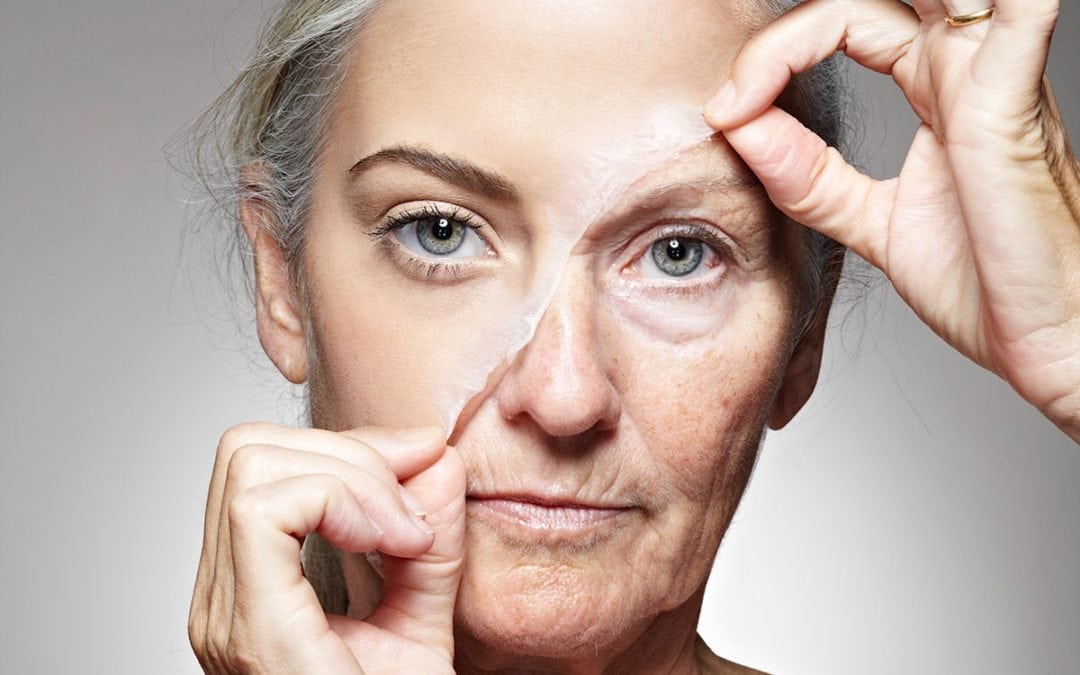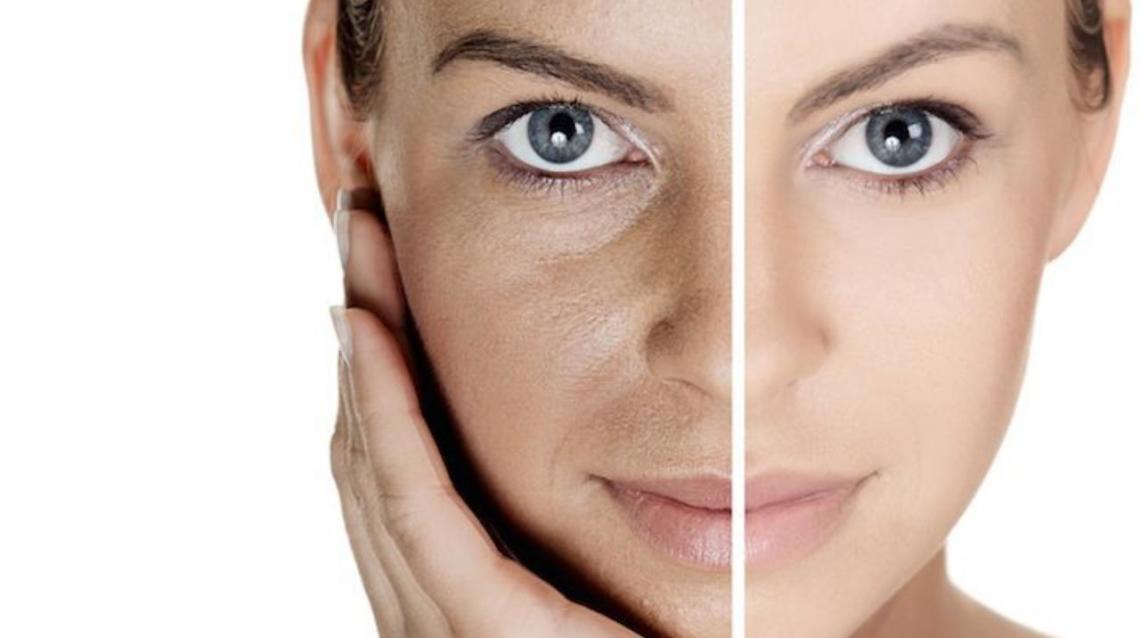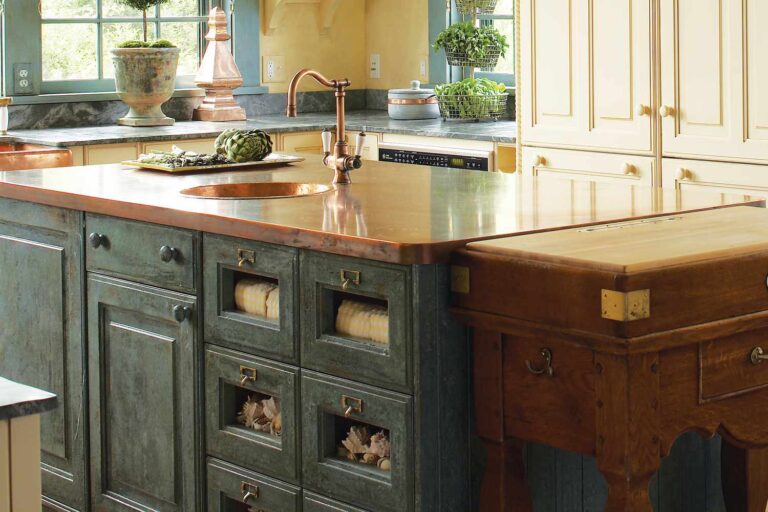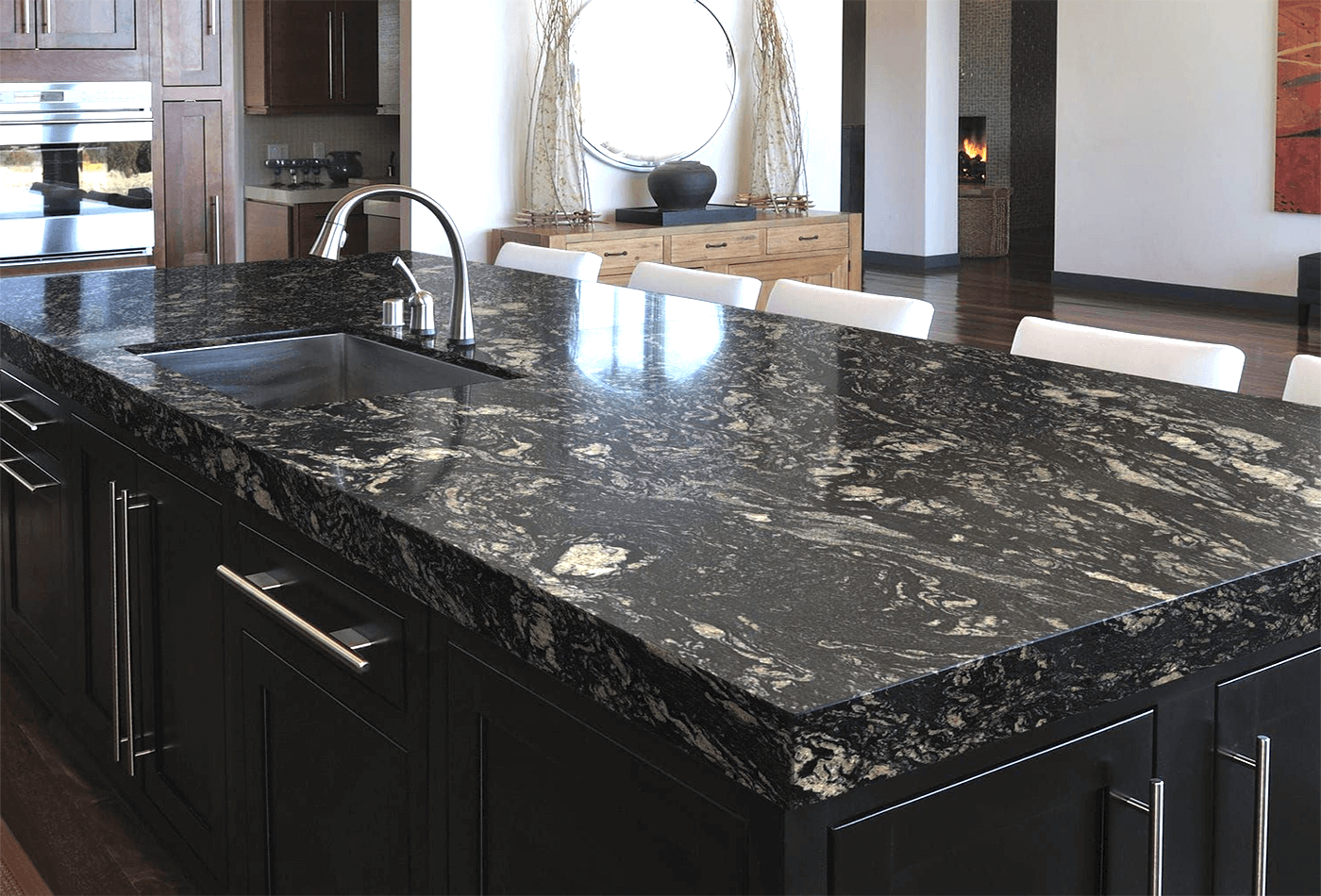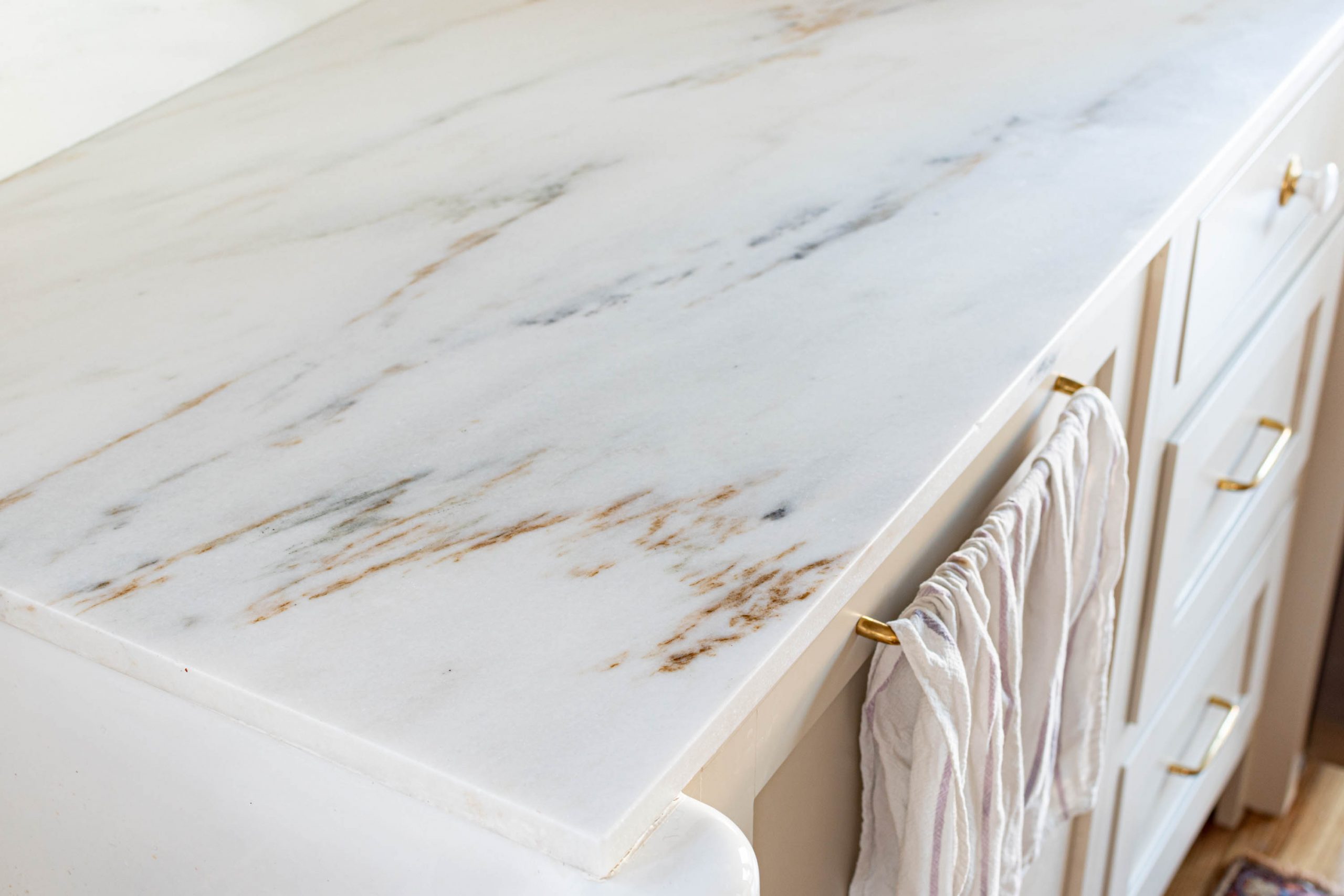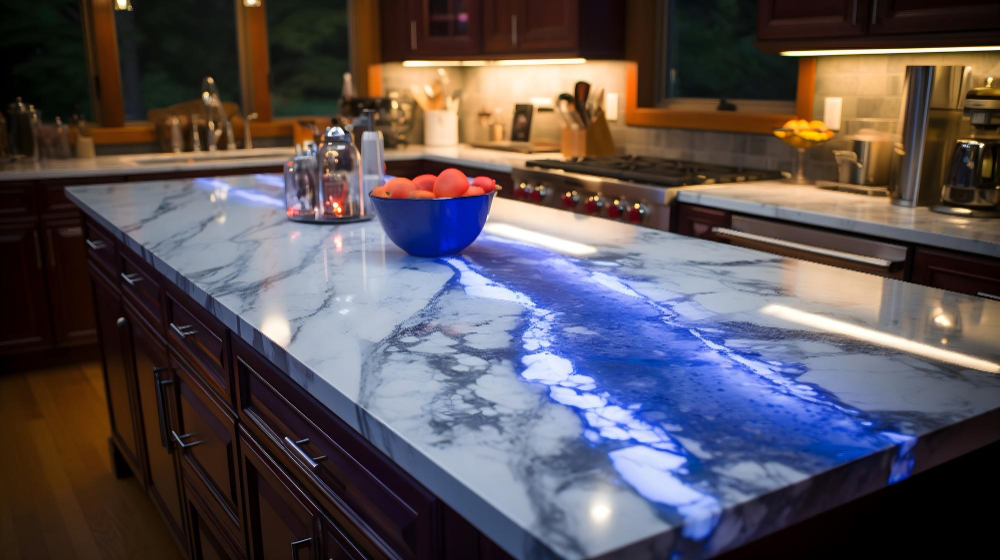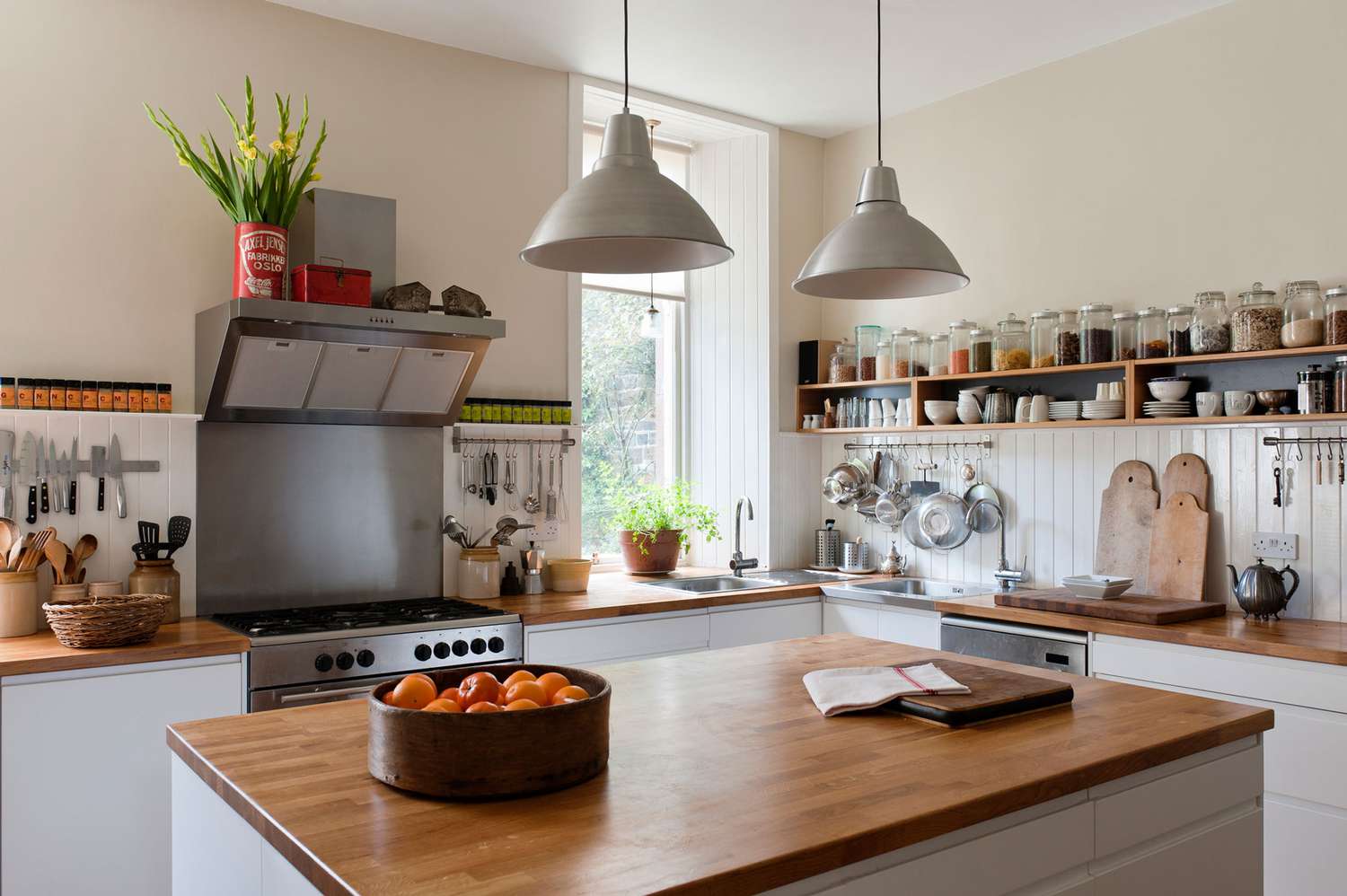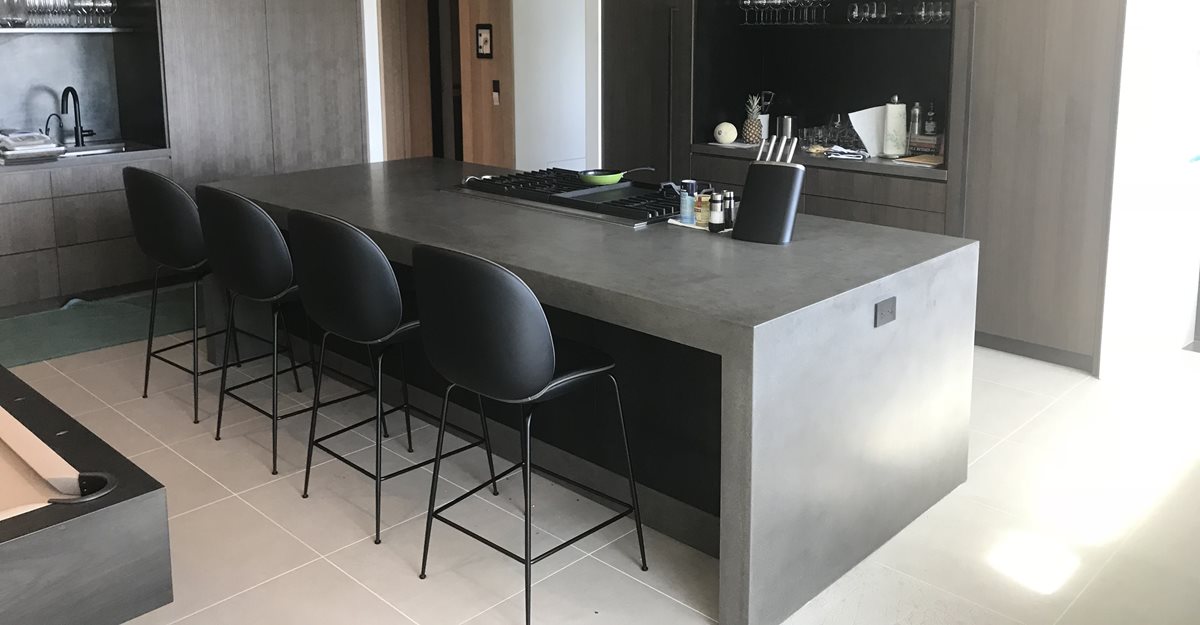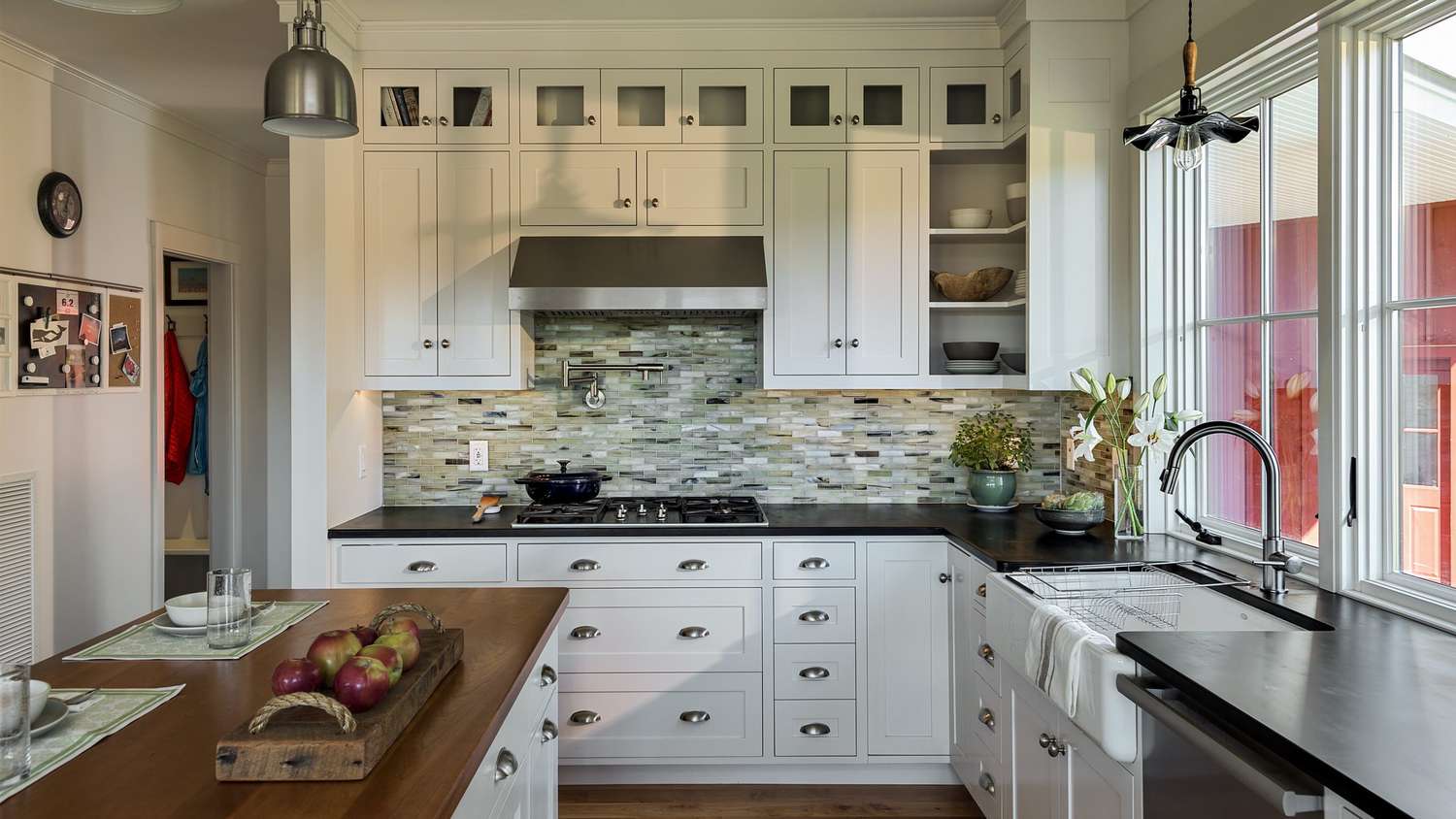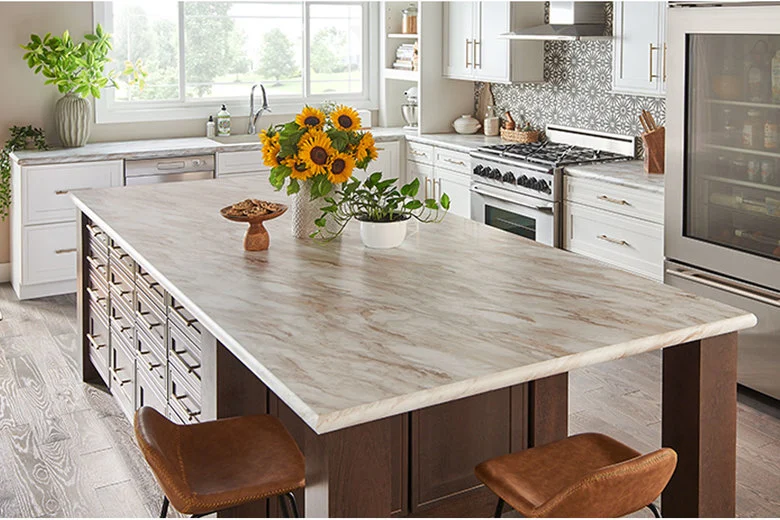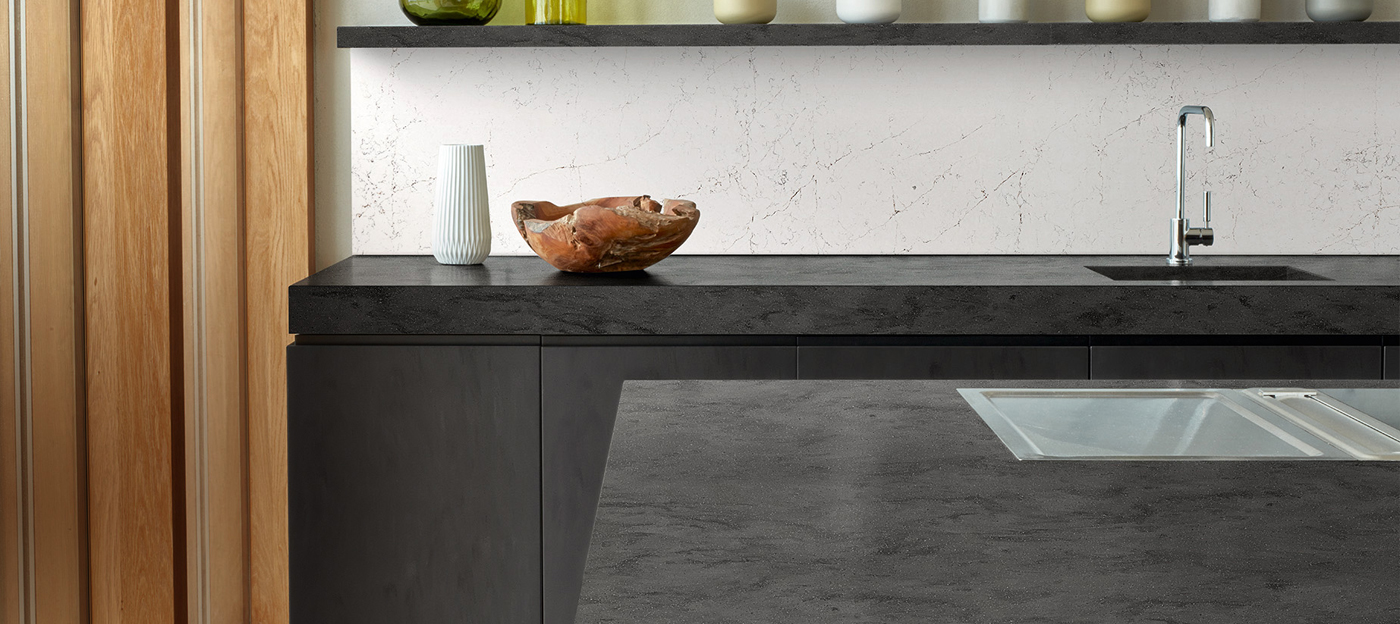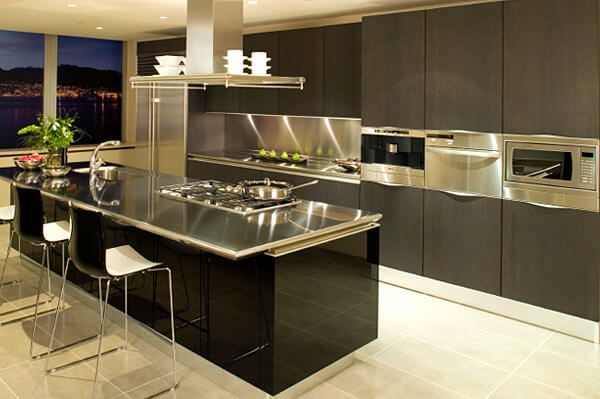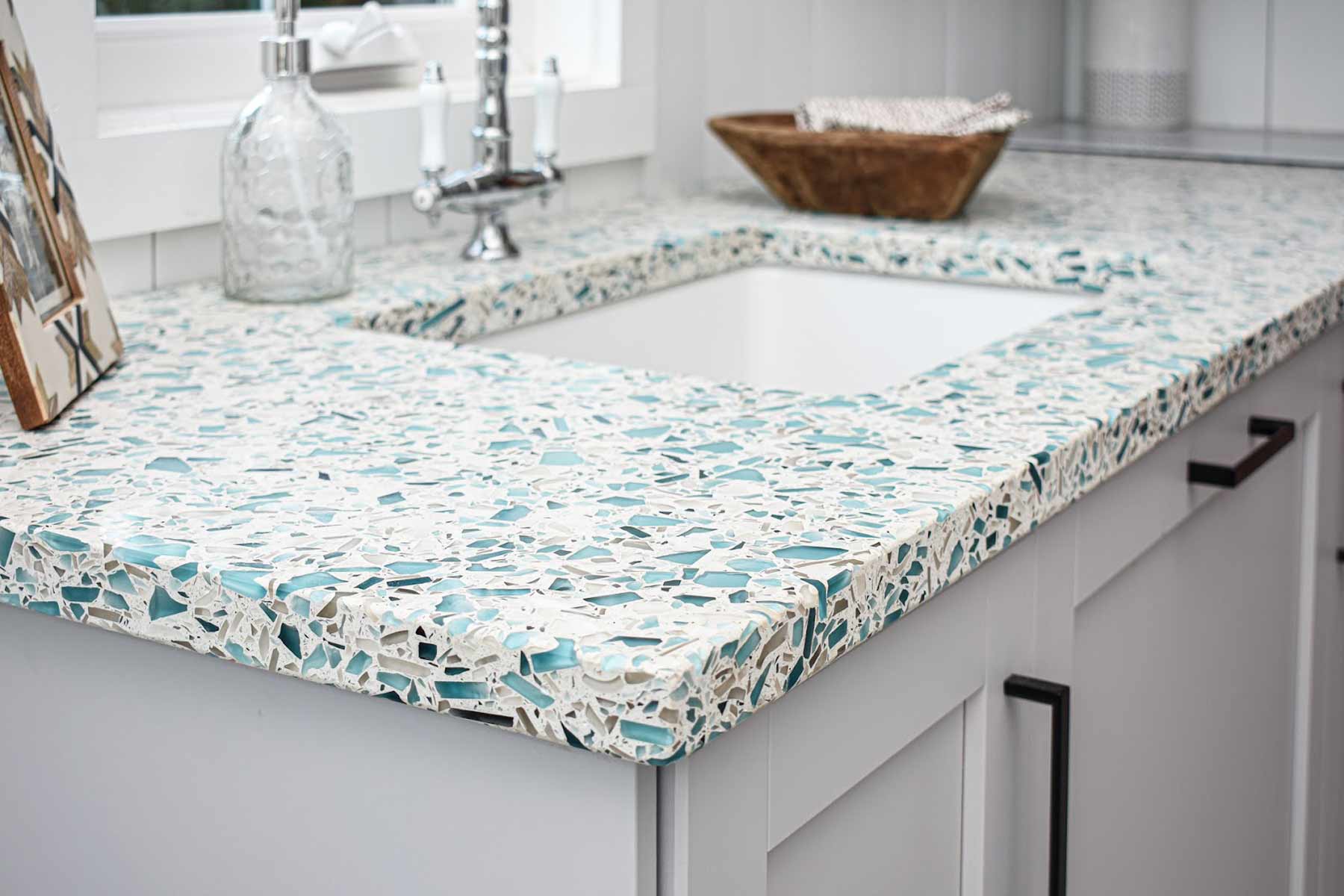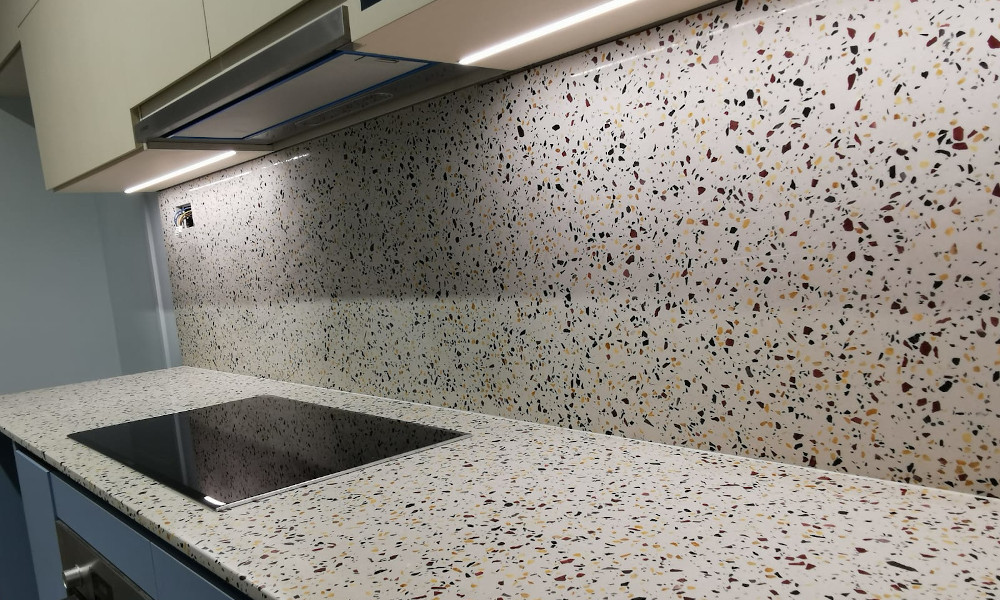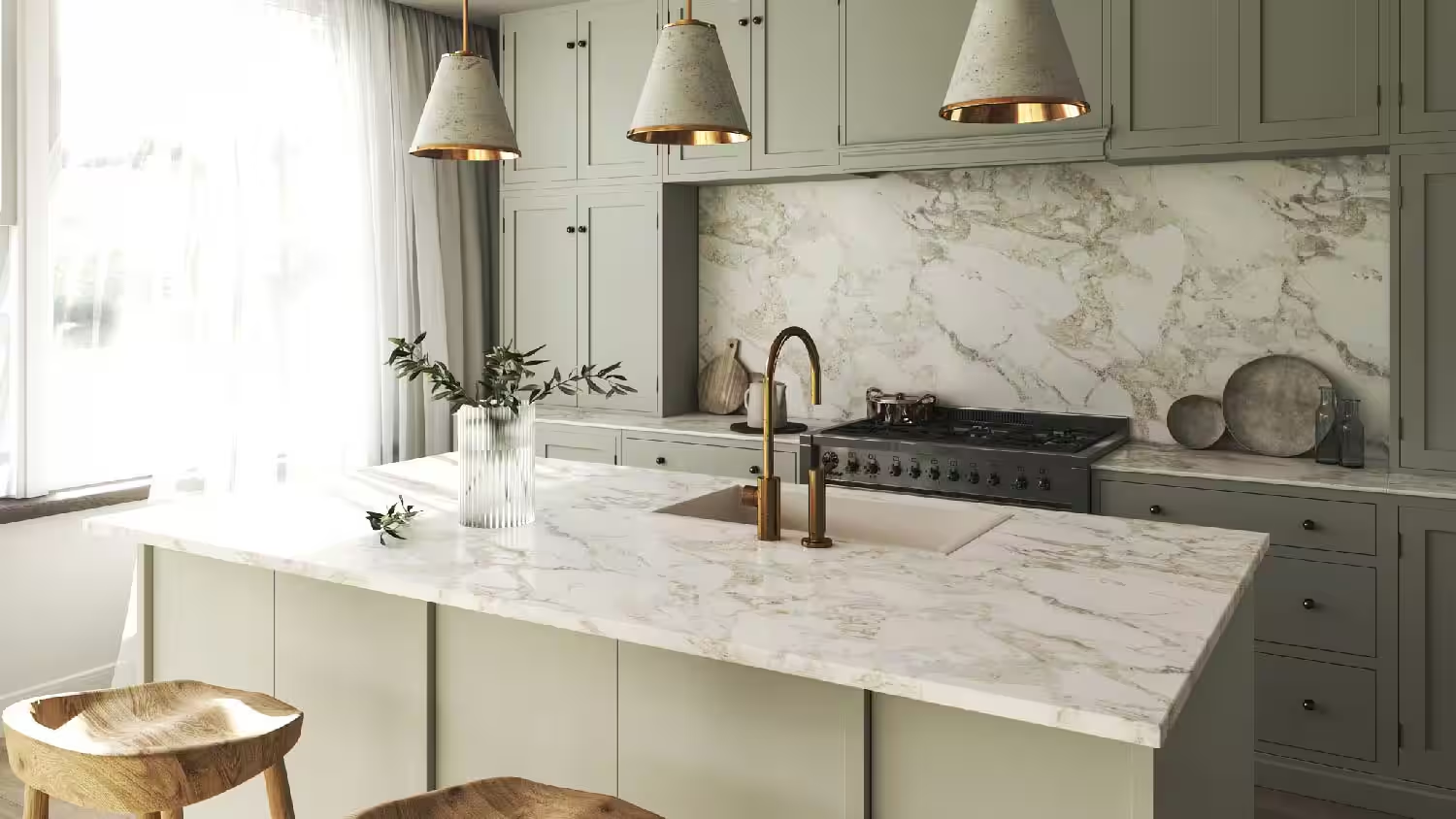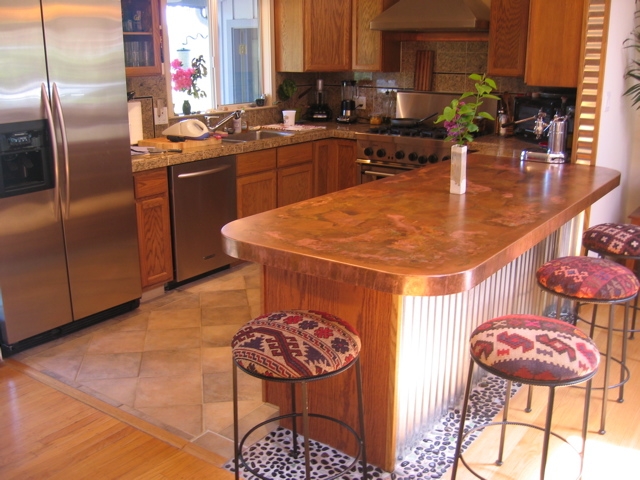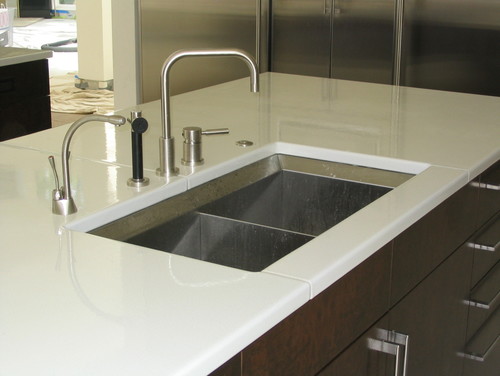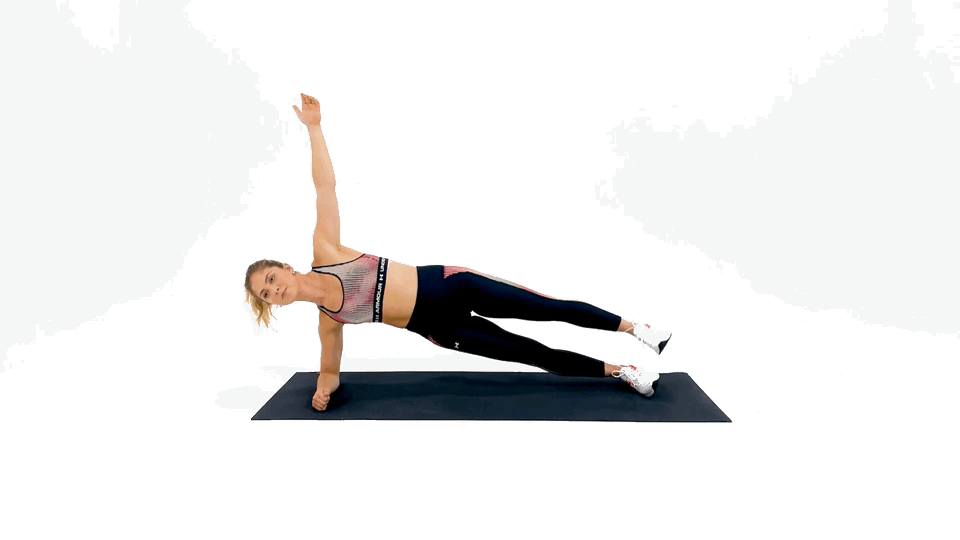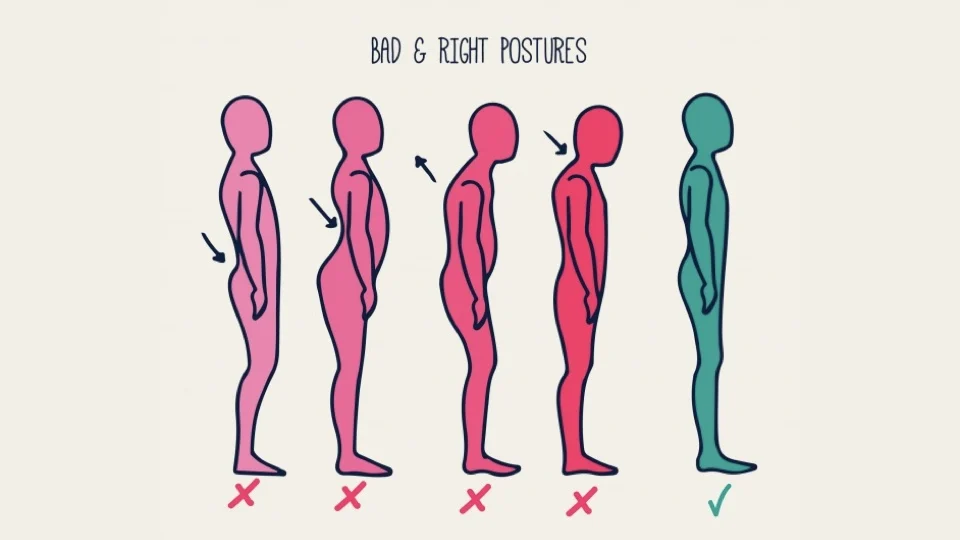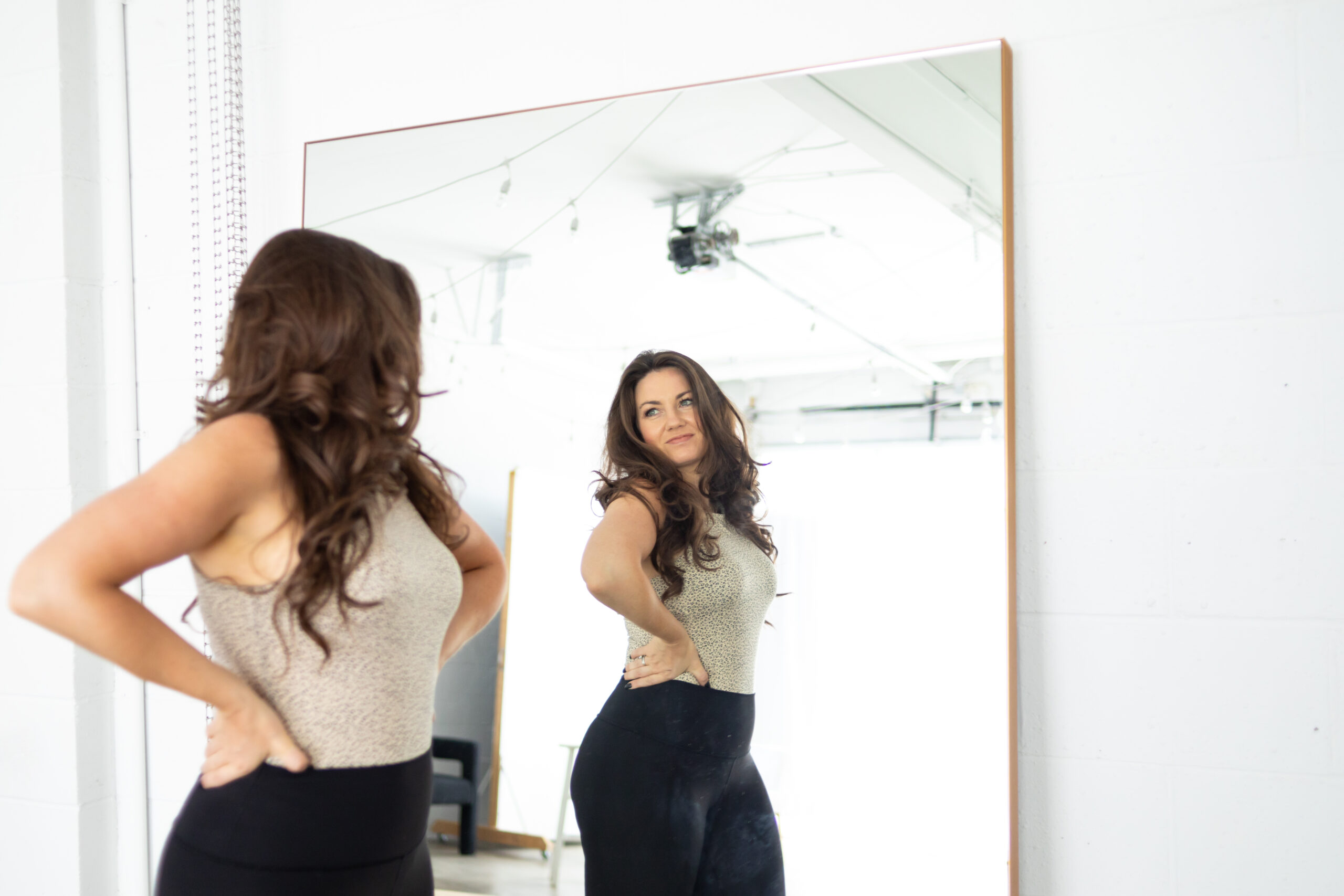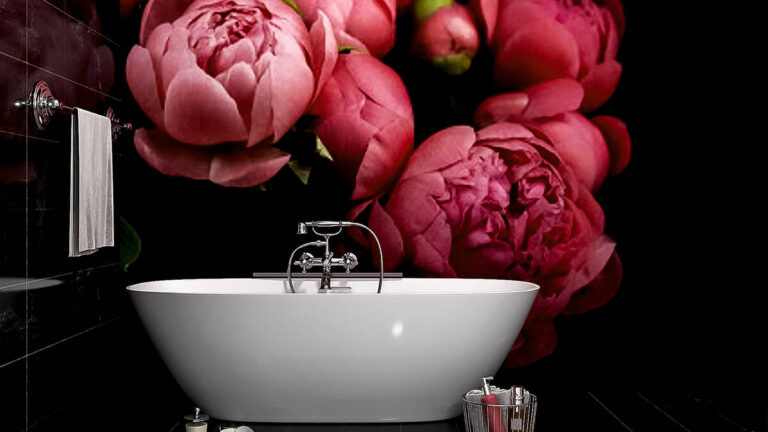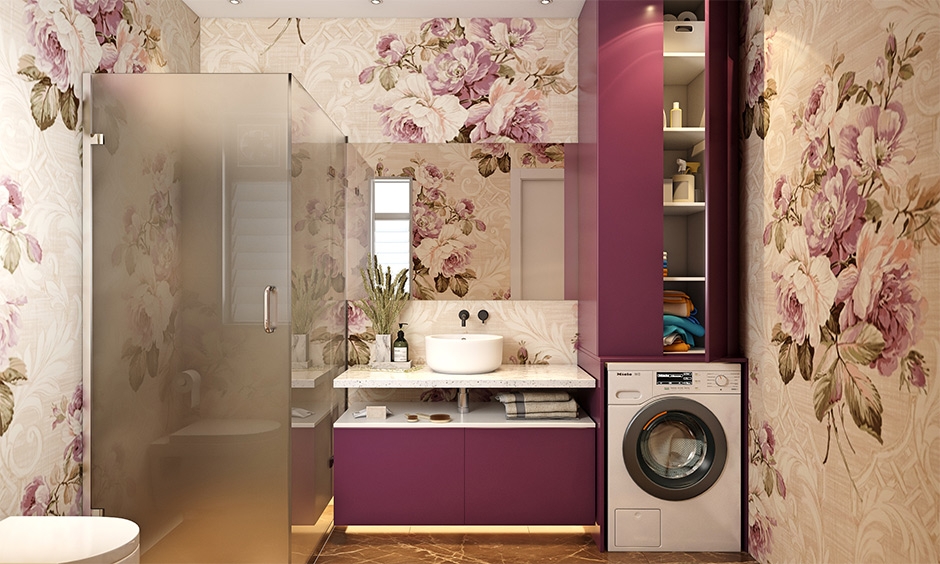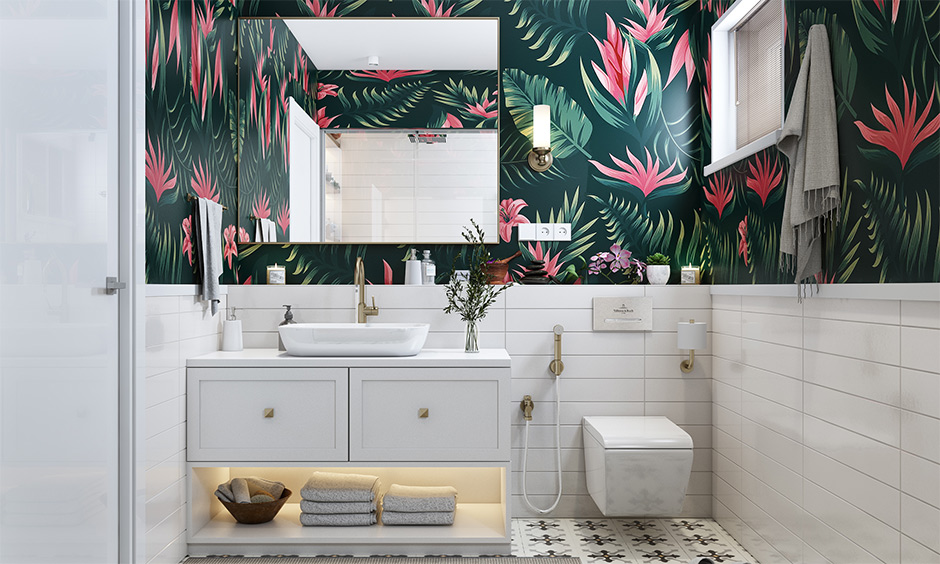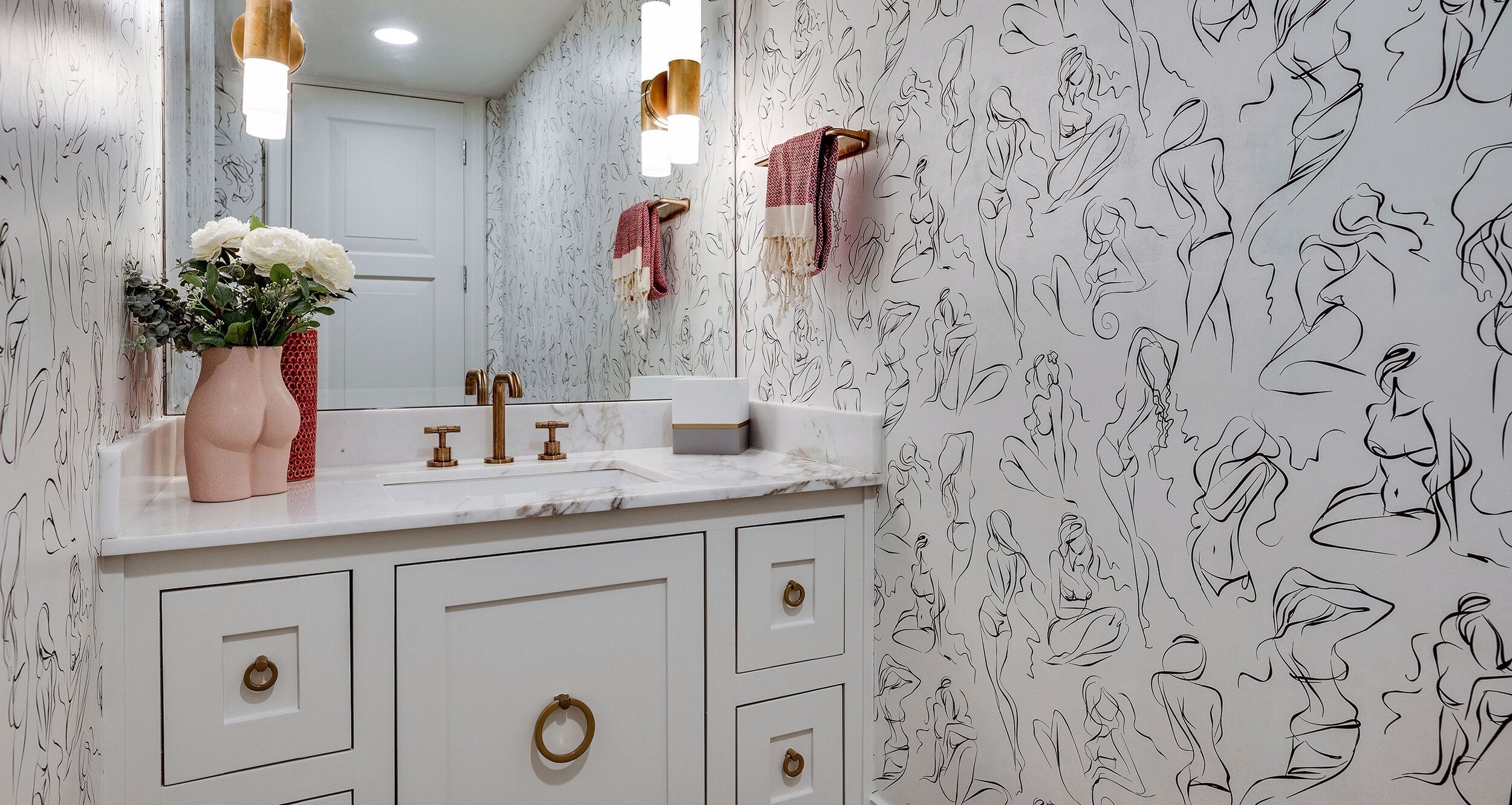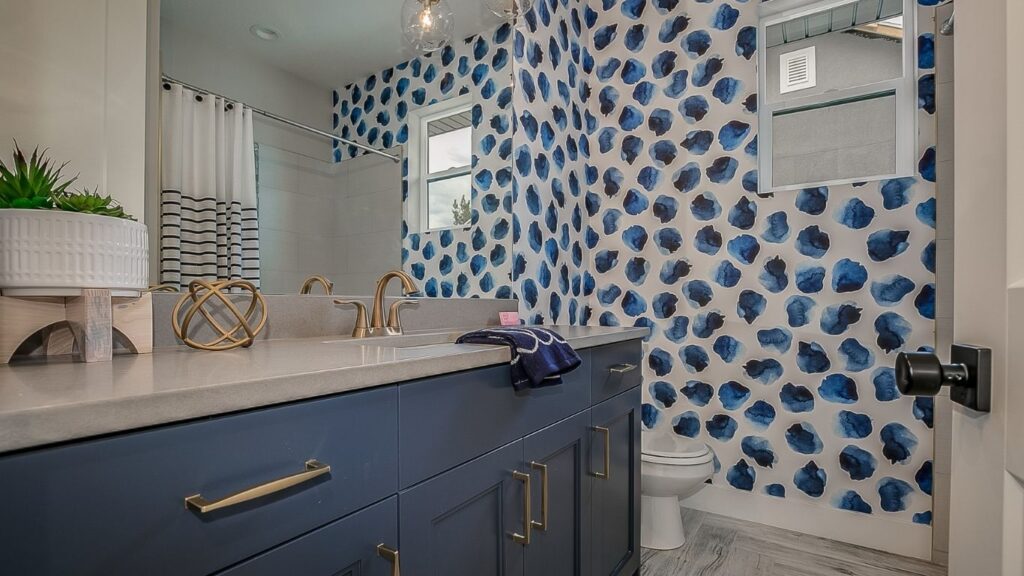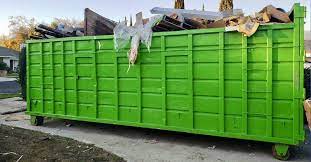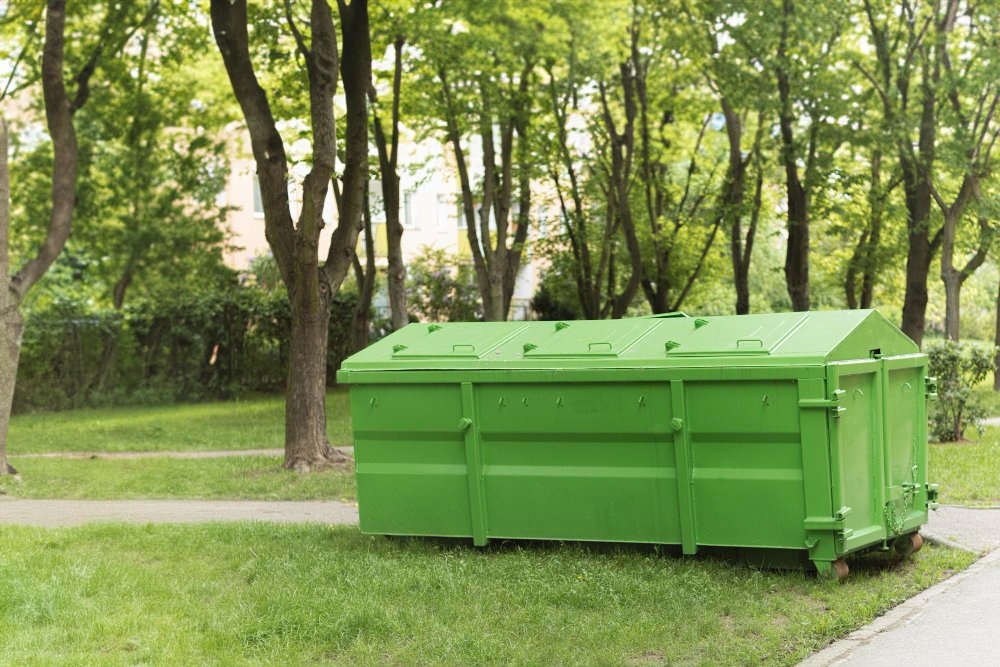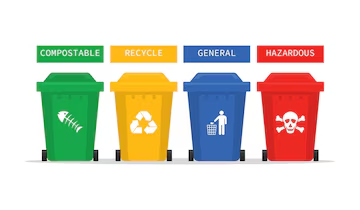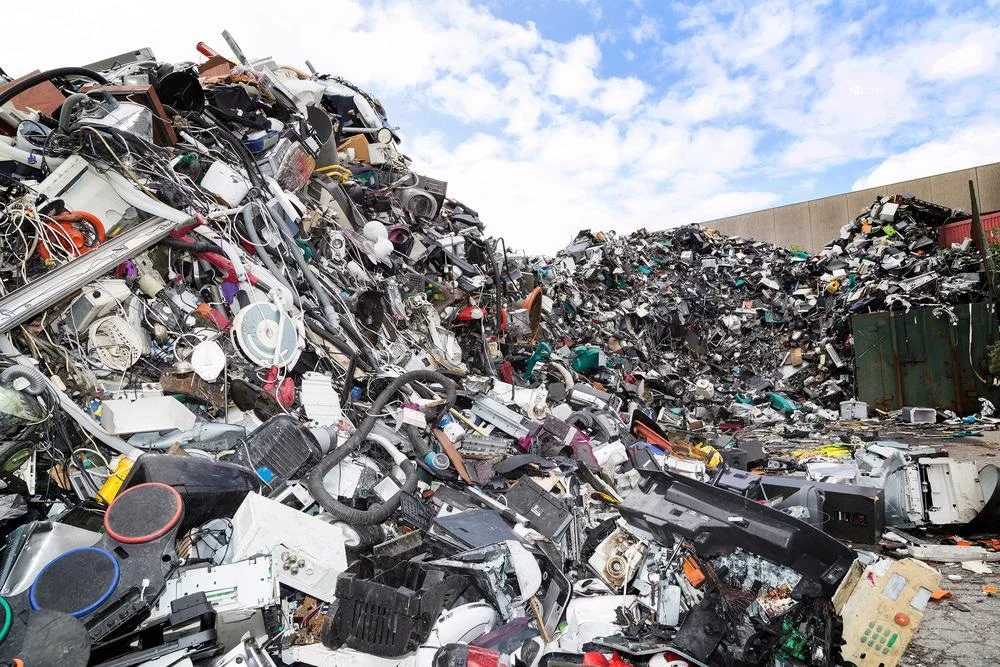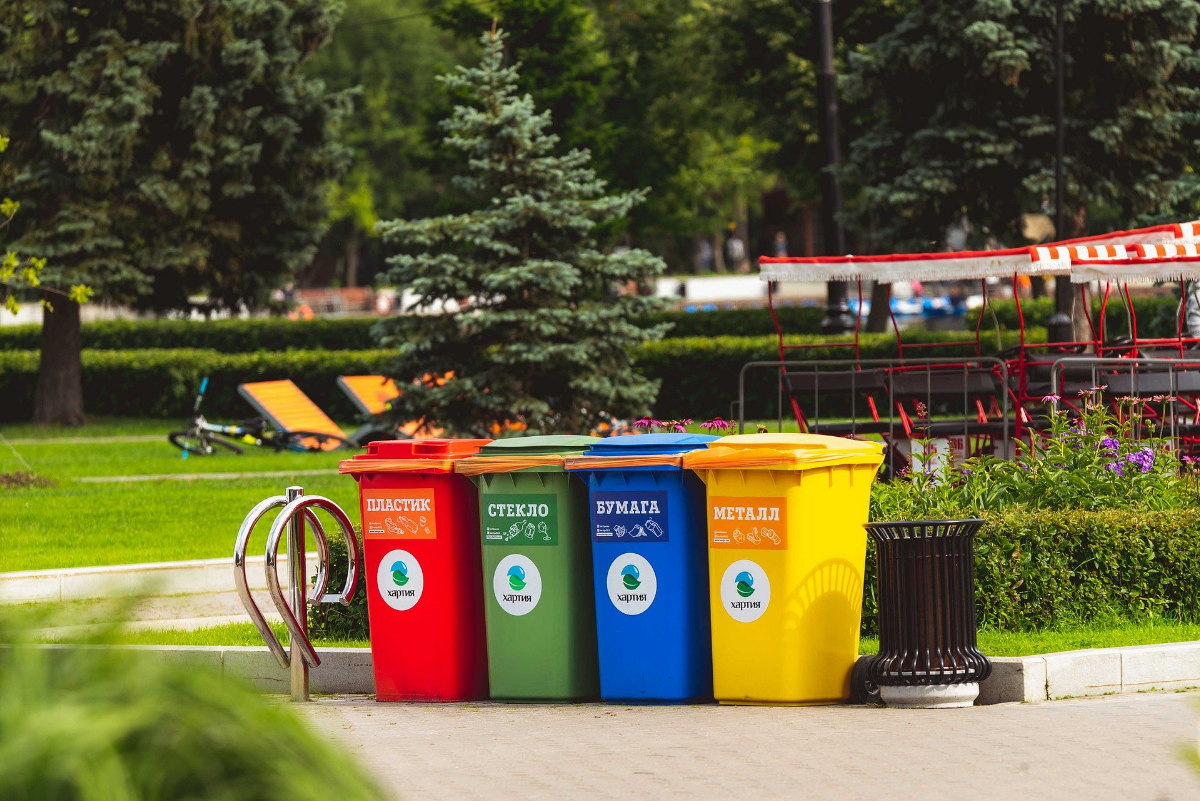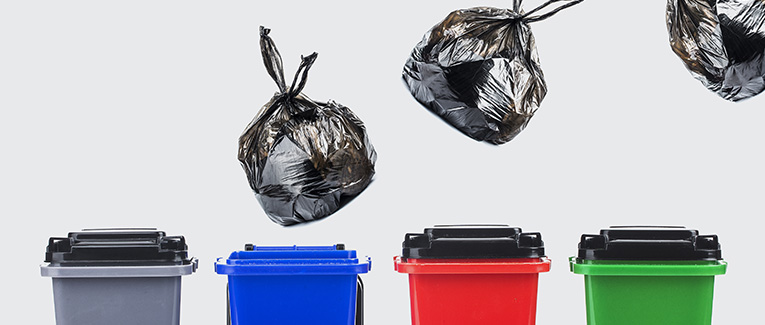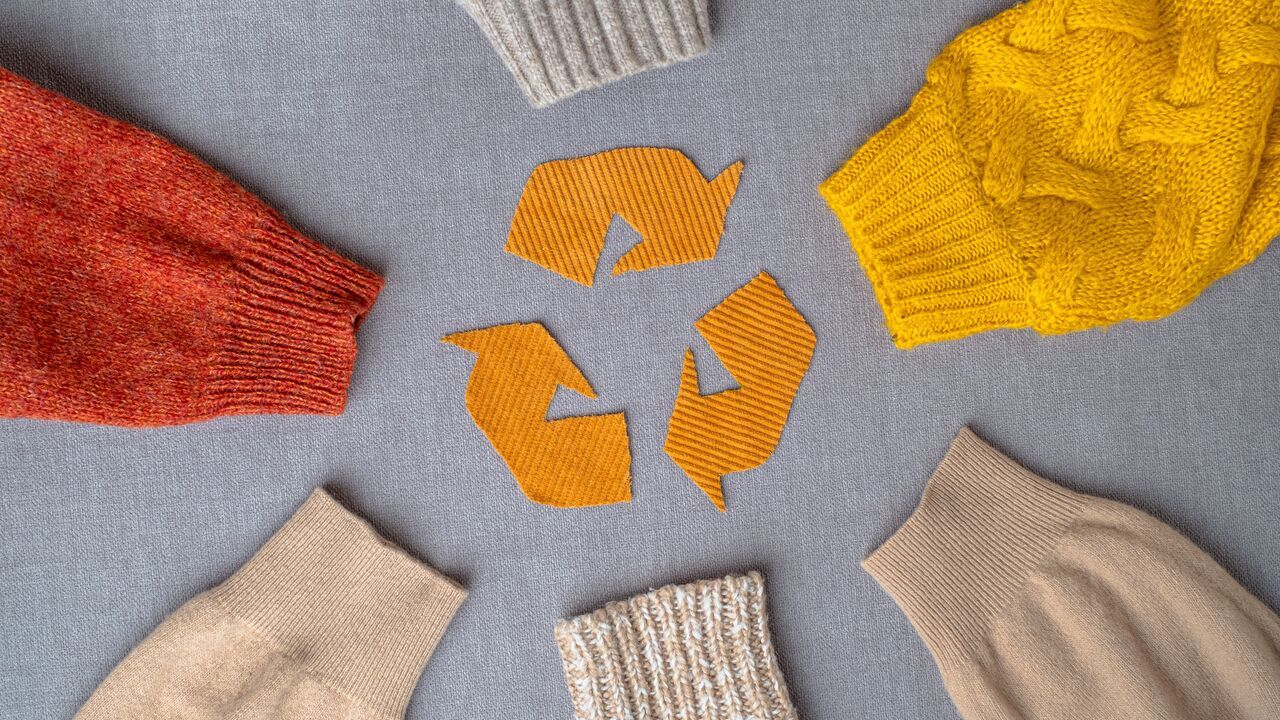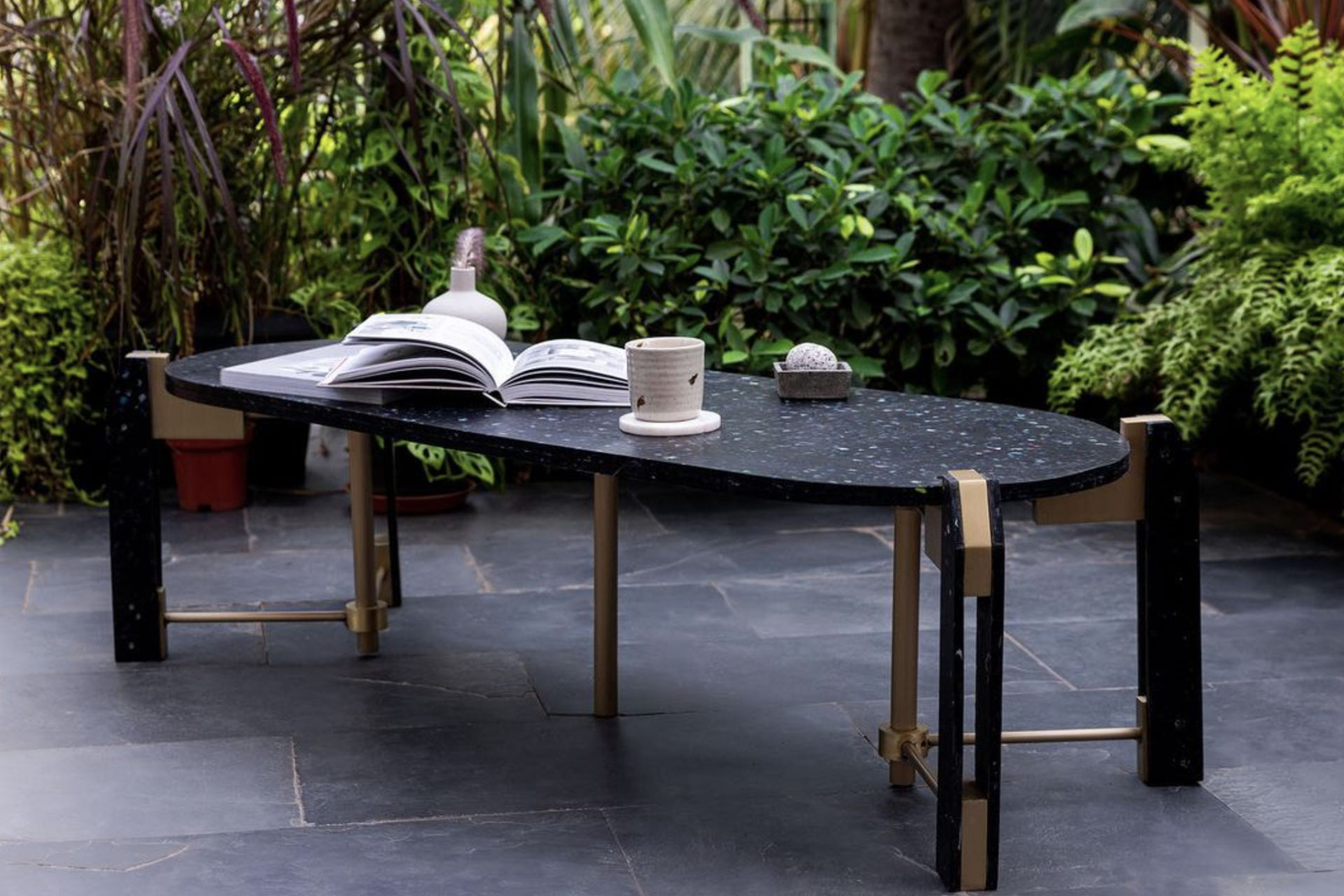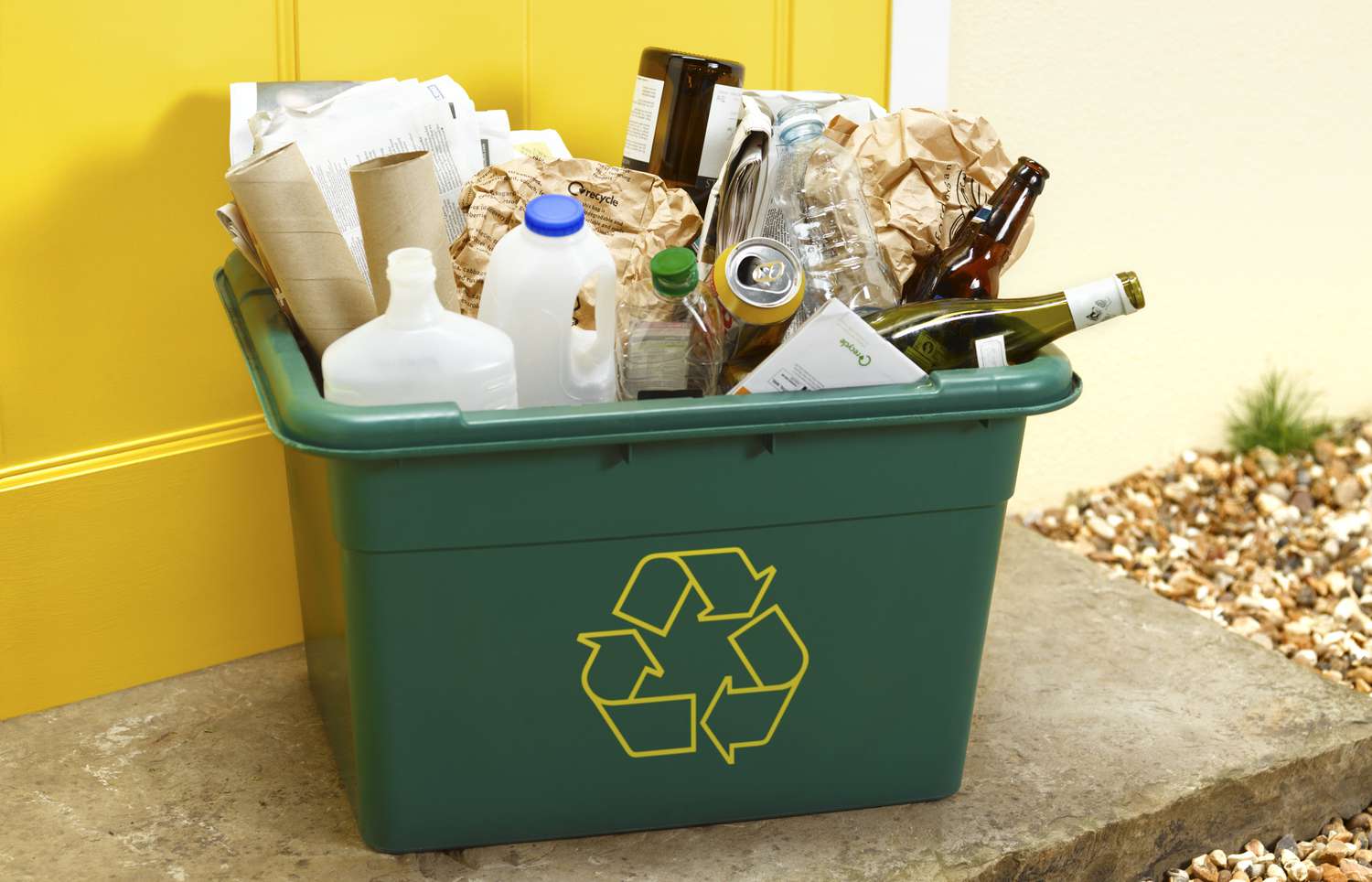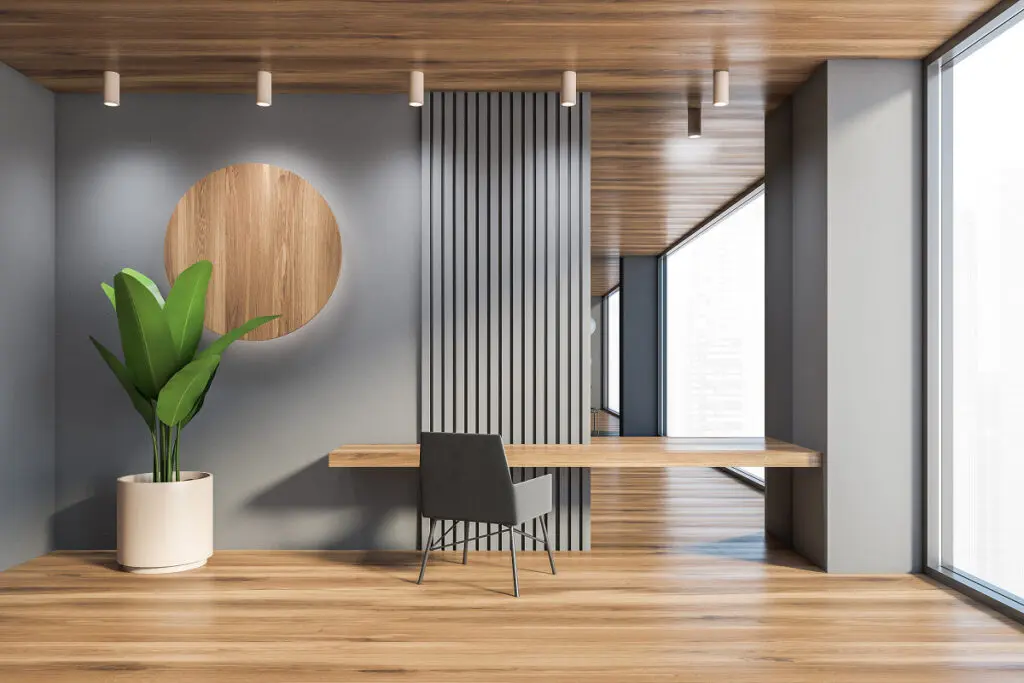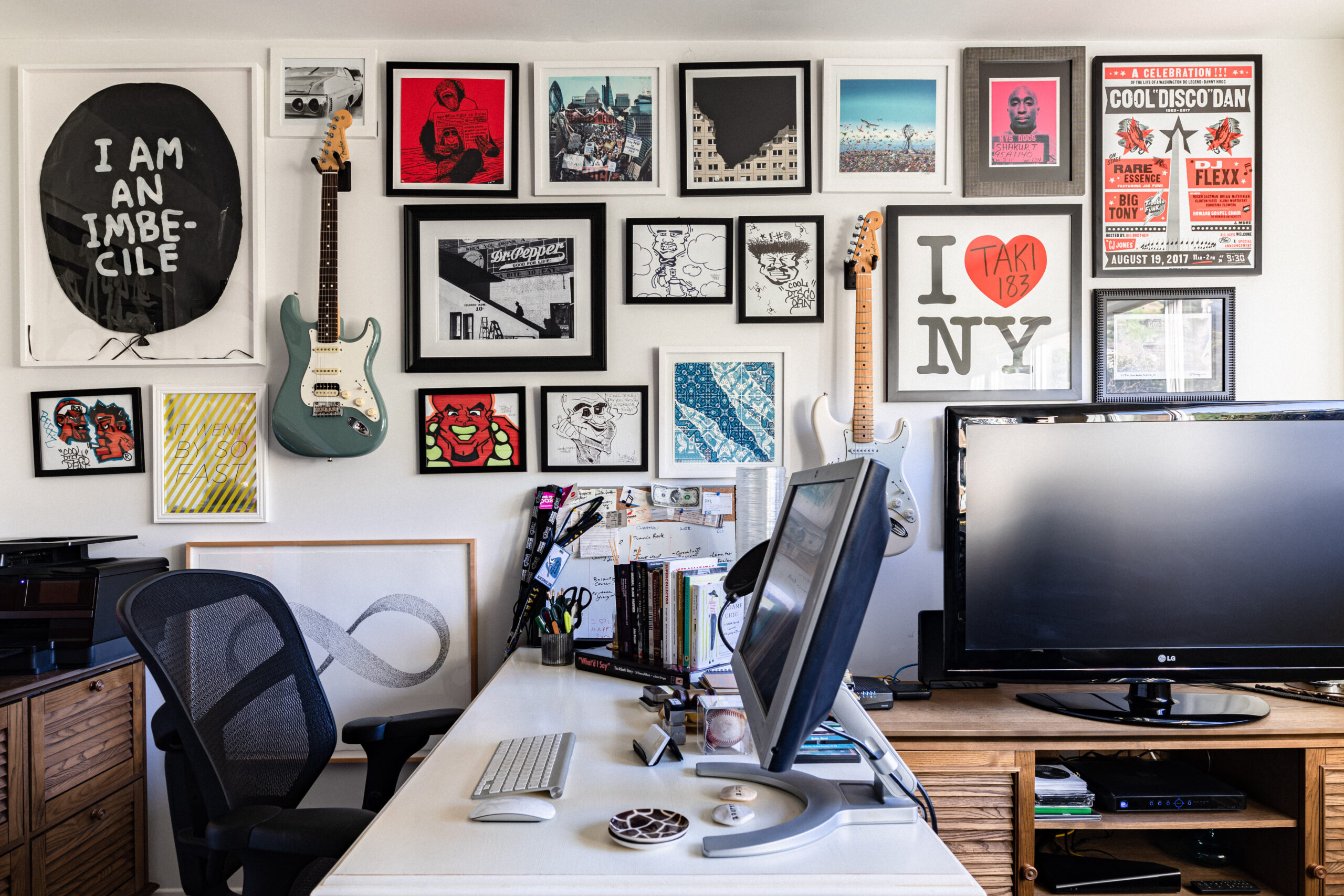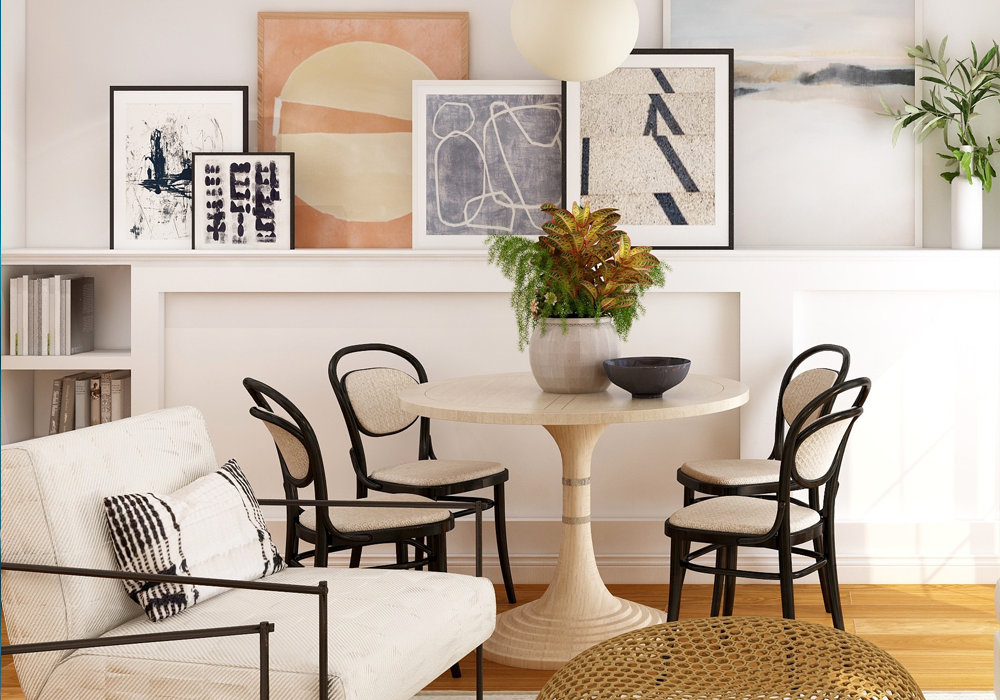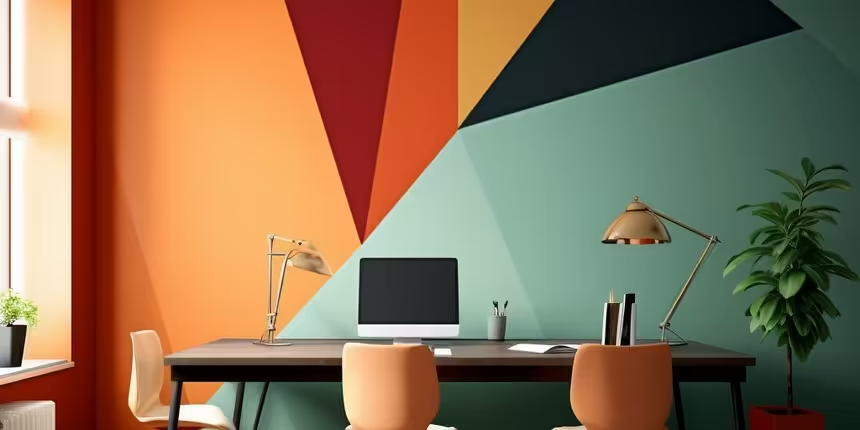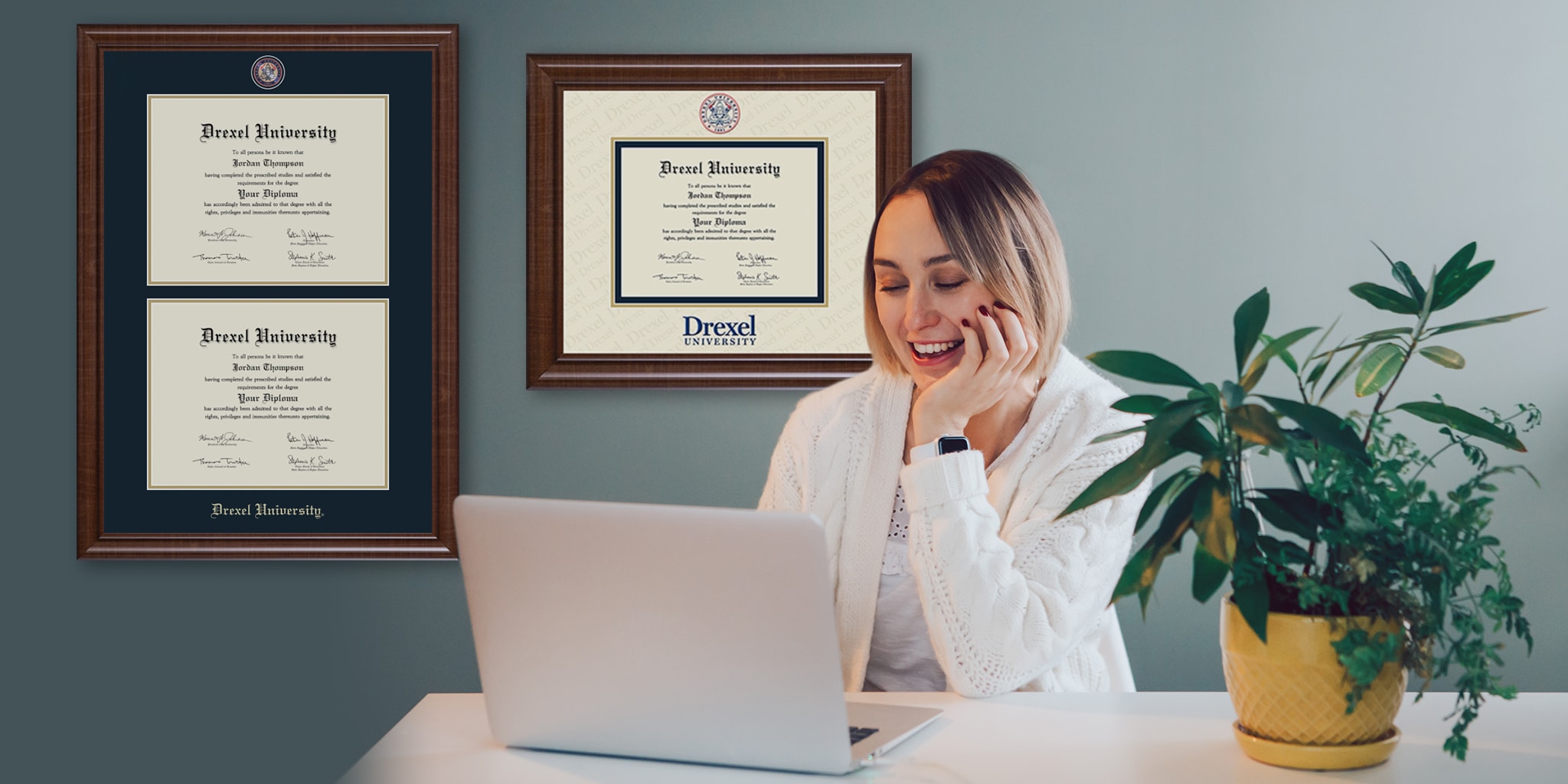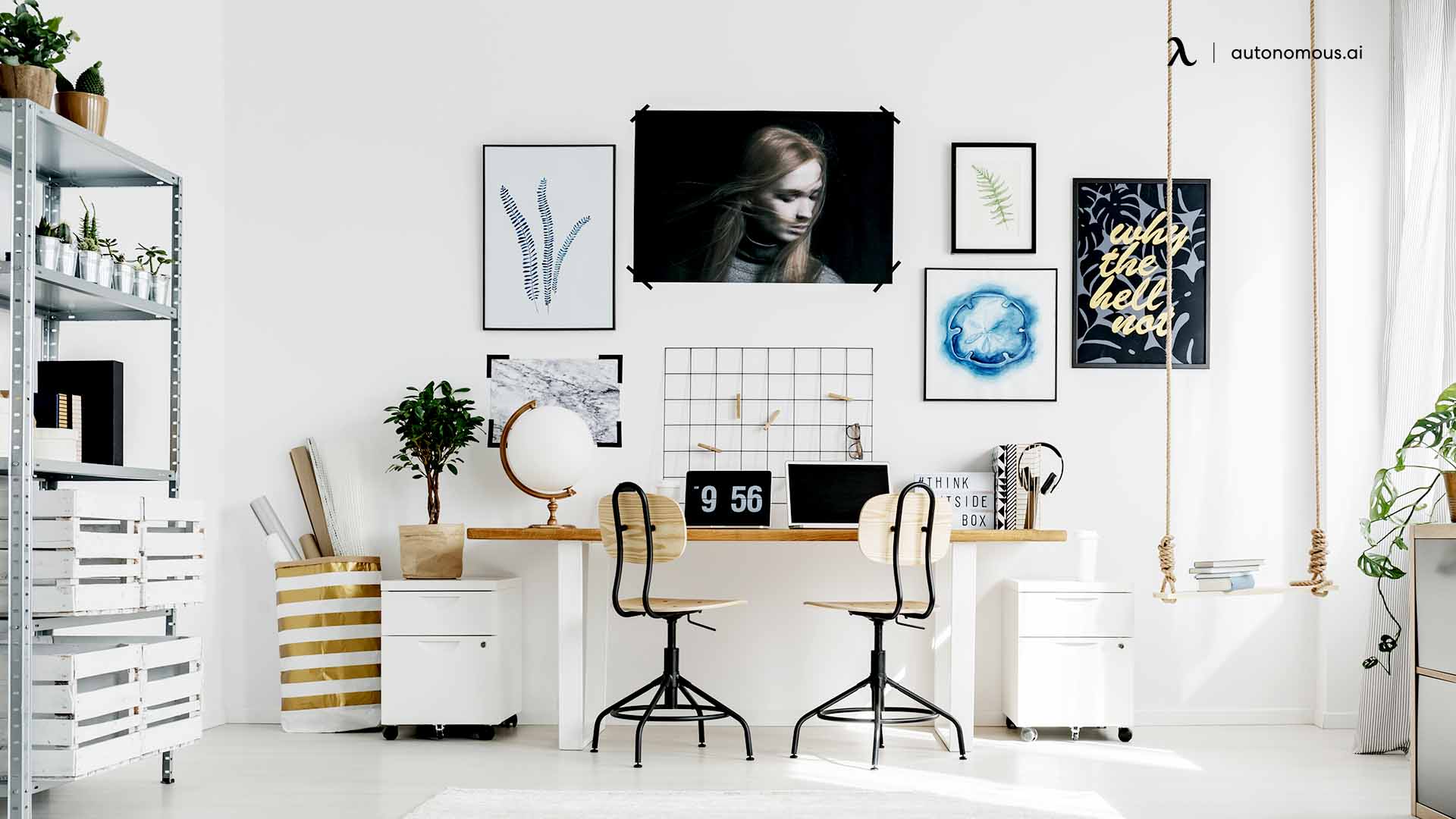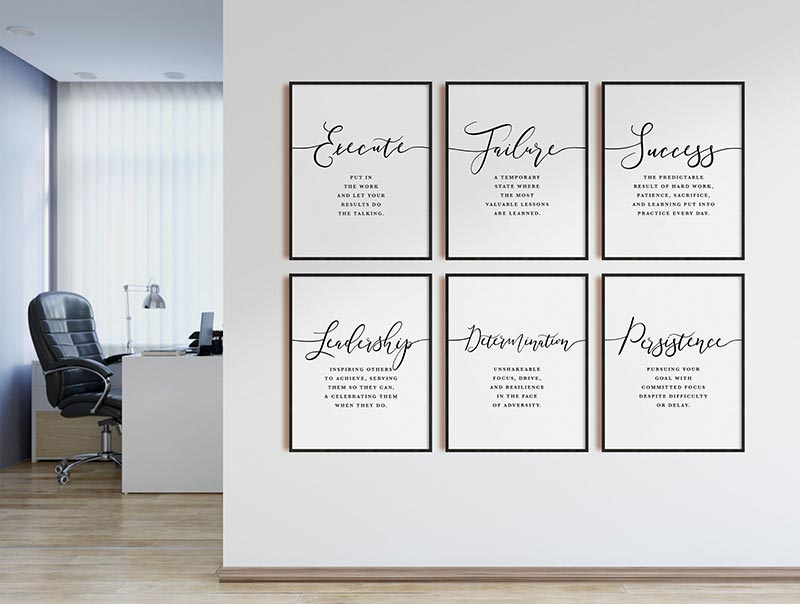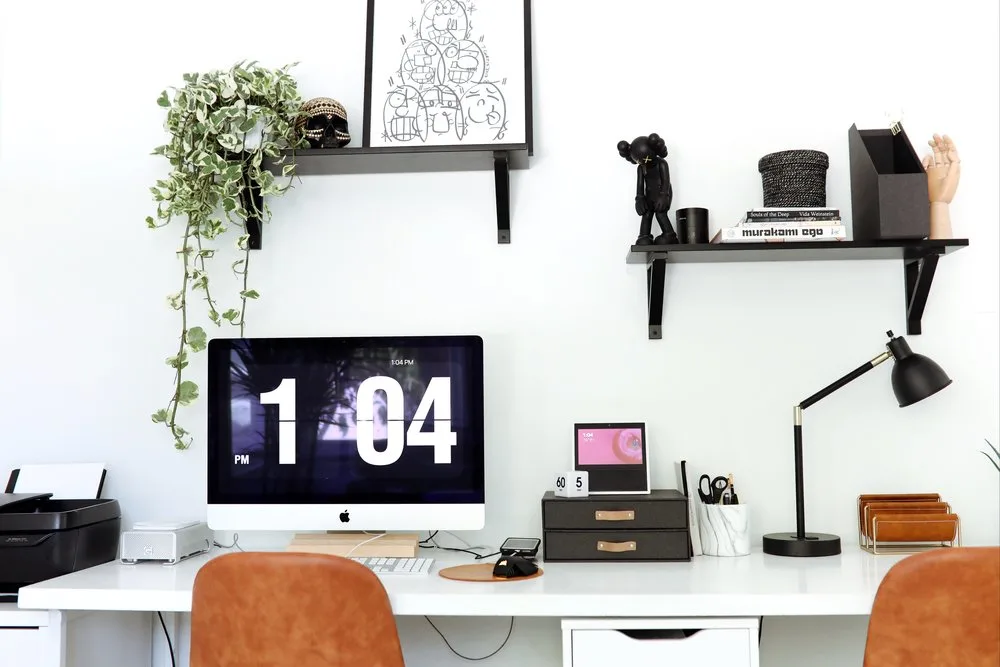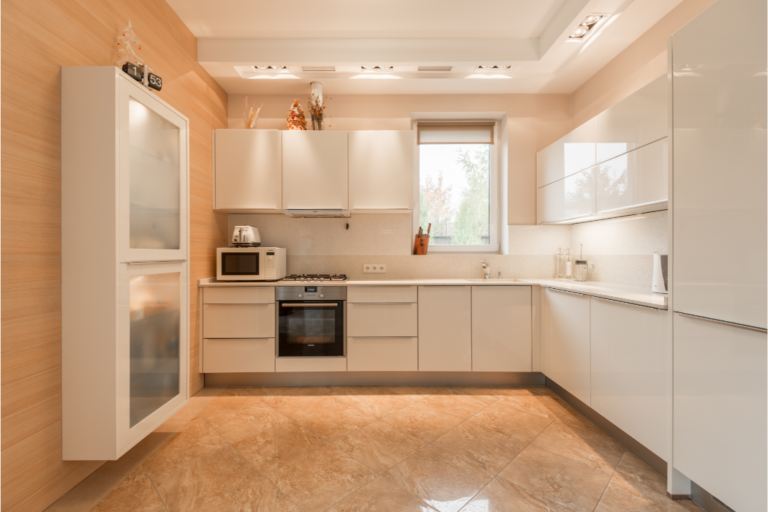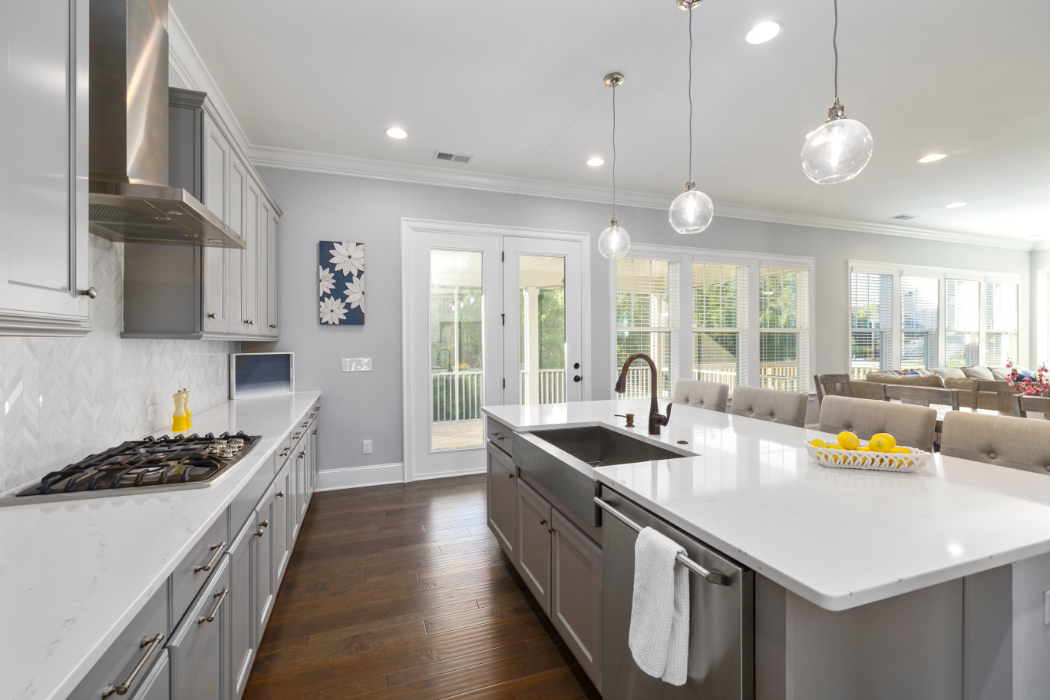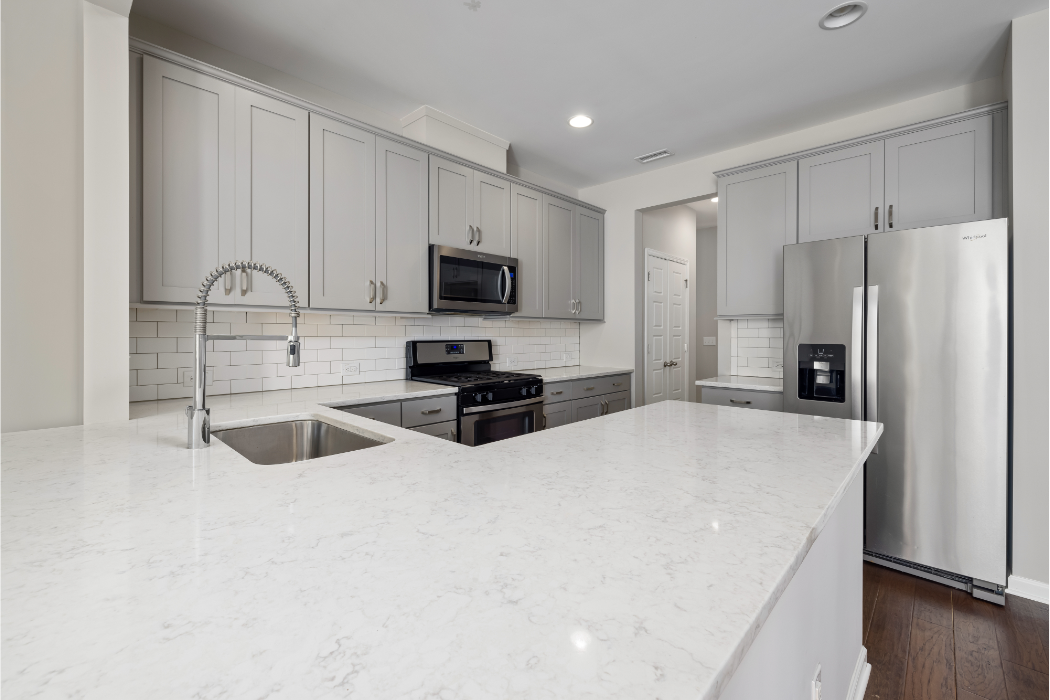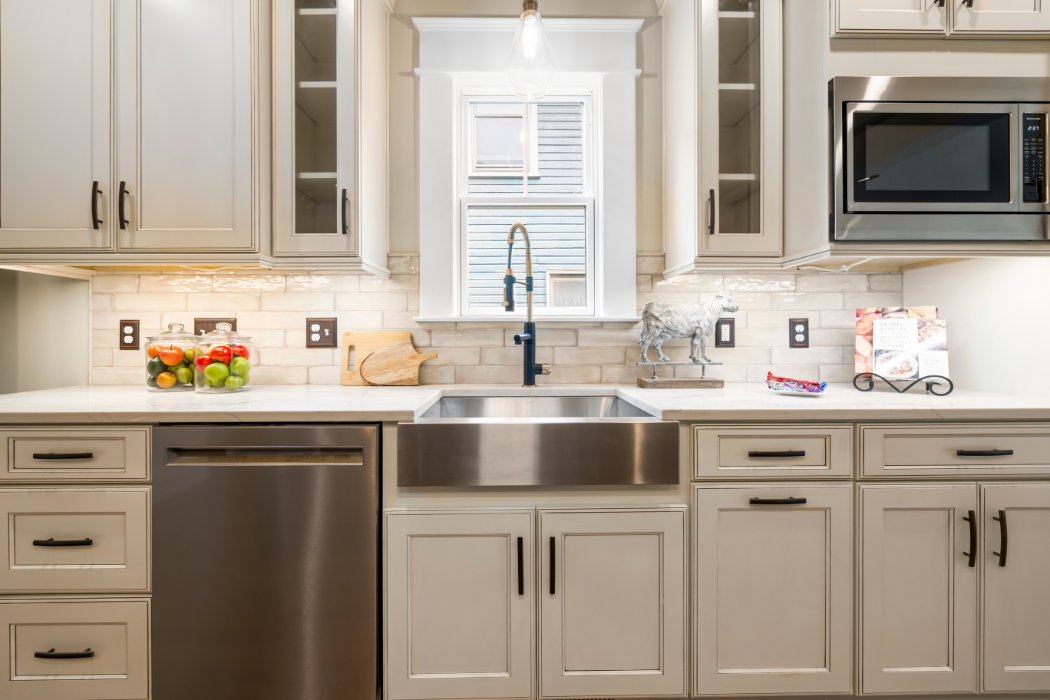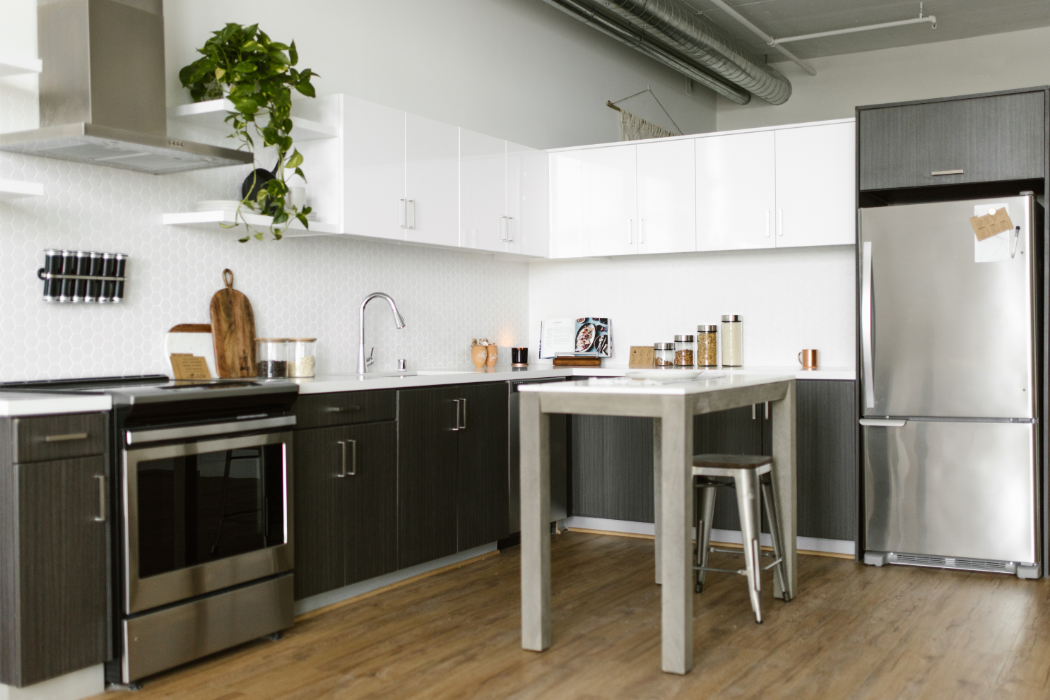The maximalist decor embraces an extravagant and abundant approach, combining a rich blend of vibrant colors, intricate patterns, varied textures, and meaningful personal items. Maximalism allows you to showcase your personal tastes and cherished possessions—whether it’s art, furniture, or decorative treasures—by bringing them all into the spotlight, often in a coordinated yet bold arrangement. This approach ensures that every home designed in a maximalist style becomes a distinct reflection of the individual behind it, making each space truly one-of-a-kind.
Maximalism can be described as a vibrant blend of curated chaos. While the guiding principle of this design style is often summed up as “more is more,” it’s not simply about filling a space with an excess of items. Instead, it focuses on embracing individuality by incorporating personal tastes and cherished objects into the overall design, creating a space that reflects one’s personality.
To master maximalism, the key is striking a balance through thoughtful focus and planning, allowing it to be lavish without becoming overwhelming to the senses.
Contents
An Overview of Maximalist Design History
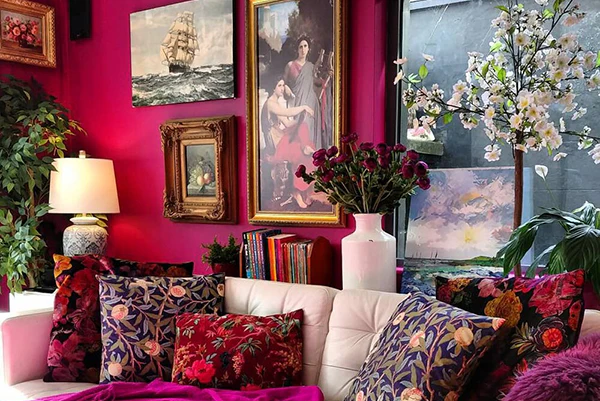
The maximalist interior design style traces its origins back several centuries, gaining significant prominence during the Victorian era. At that time, the approach, though not known as maximalism, was focused on showcasing wealth through lavish displays of treasures, rich textures, opulent home decor, and extensive collections.
Several interior design styles, like English cottage and French country, embrace the maximalist approach of displaying cherished items, emphasizing layers of personal accessories and decor.
Is Maximalist Interior Design Gaining Popularity?
In recent years, maximalist designs have experienced a revival in popularity, driven by the style’s bold vibrancy, which serves as a strong source of inspiration on social media. Maximalist decor is perfect for those who prefer a mix of patterns, textures, and colors in their living space.
Maximalism has gained significant popularity among millennials and younger generations who prefer to personalize their spaces, moving away from the stark, rigid minimalism that often feels devoid of character.
Key Features of Maximalist Interior Design

Maximalist style is characterized by its fluidity and individuality, showcasing the personality and preferences of the designer. Because maximalist designs are deeply personal and layered, there are countless ways to transform your home into a grand or even soothing reflection of what you cherish. With maximalist decor, you can showcase your personality through an abundance of art, accessories, and statement pieces.
Joy is a key element of maximalist design. Infuse your space with layers of joy to give it a personal touch. Incorporate your passions and interests into the decor, focusing on comfort and familiarity above all else.
Maximalist designs often showcase a delightful blend of color, layers, and decor, but they should still be intentional. The goal of maximalism is to create a cozy and welcoming atmosphere, so excessive clutter can overwhelm a space that’s already rich in visual elements.
One approach is to incorporate one or two standout features that set the tone for the rest of the space. These focal points could include bold, brightly colored plush furniture, stylishly arranged bookcases, beautifully crafted wooden cabinetry, an eye-catching light fixture, a gallery wall of artwork, or even vibrant greenery.
Next, incorporate layers that you love, such as patterns, plants, natural materials, art, collections, travel souvenirs, or anything that brings you joy when it fills your space.
Next, incorporate layers that you love, such as patterns, plants, natural materials, art, collections, travel souvenirs, or anything that brings you joy when it fills your space.
Color Palette
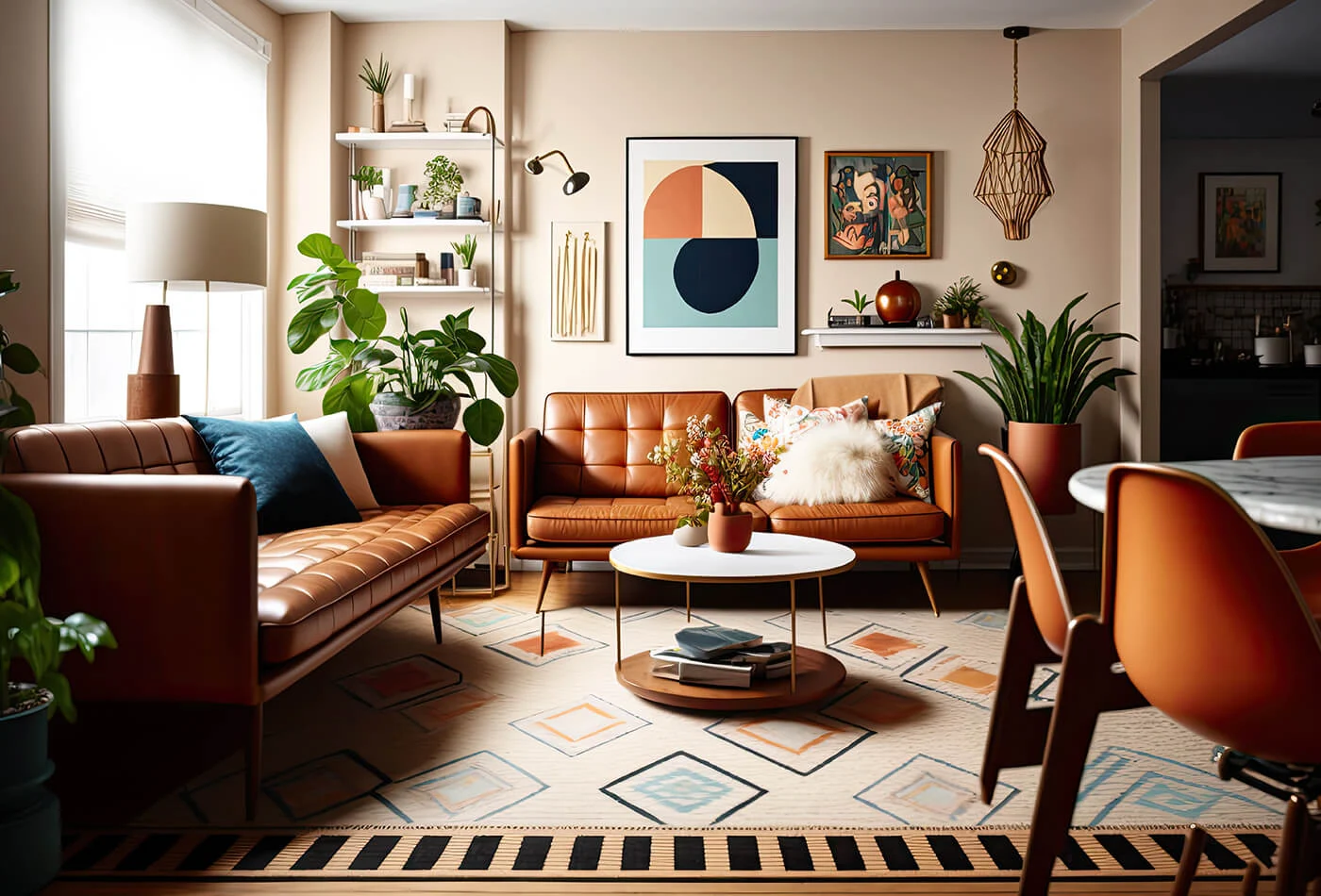
To create a true maximalist vibe, embrace bold and vibrant colors. Bright, cheerful tones are a staple, adding energy and fun to the space. Experiment with a mix of colors, patterns, and textures, incorporating florals and diverse shapes to craft a beautifully layered maximalist style for your home.
Incorporating color is key to achieving a maximalist style. With the wide variety of colors and patterns typical of this design approach, finding a unifying theme can help create harmony, whether within a single room or across multiple rooms.
To achieve a harmonious balance, select 2-3 colors, finishes, or coordinating patterns to layer consistently throughout the space. Whether it’s mixing bold colors or layering patterns, maximalist decor breaks traditional design rules in exciting ways.
The space doesn’t need to be overly colorful, though it can be if that’s your preference. To achieve a maximalist style without overwhelming the space with color, consider adding depth and interest through textures and natural materials like wood, stone, metal, linen, leather, velvet, and more.
Creating a 12 Maximalist Decor Hacks: Design Tips and Ideas
Here are some tips to help you personalize and enhance your maximalist-style home.
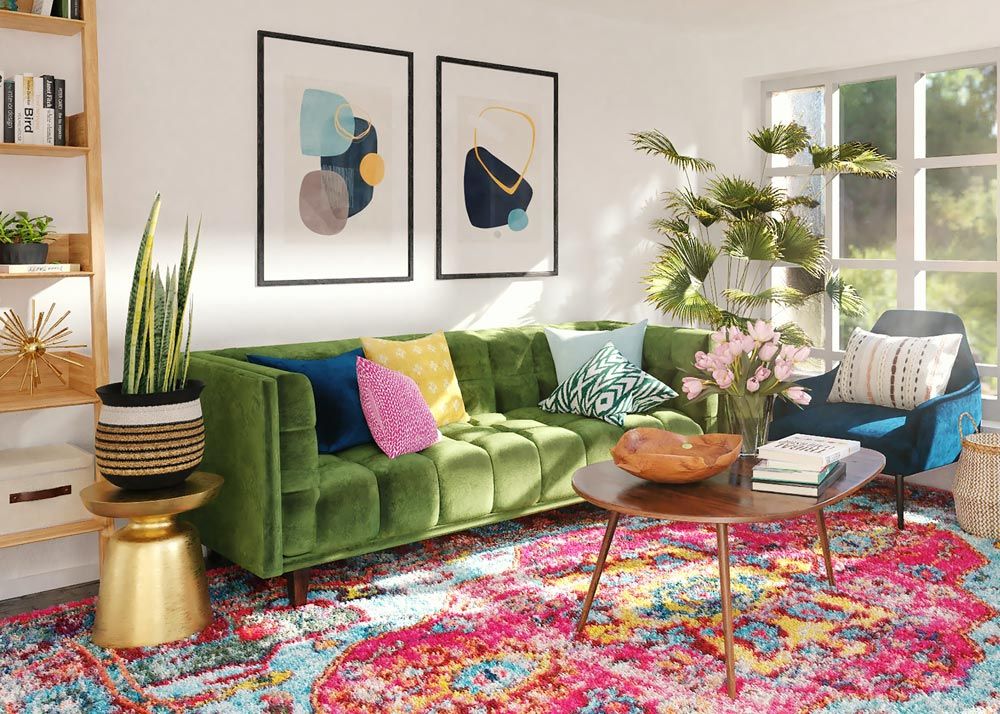
When designing a maximalist space, the key is to make it a reflection of your personality and passions. Incorporate items you love or have collected, and showcase your favorite colors, fabrics, and accessories. The beauty of maximalist decor lies in its freedom, allowing you to blend various styles without following a strict formula. Remember, this is your space to design and enjoy, so let your creativity shine!
2. Spot the Common Ground
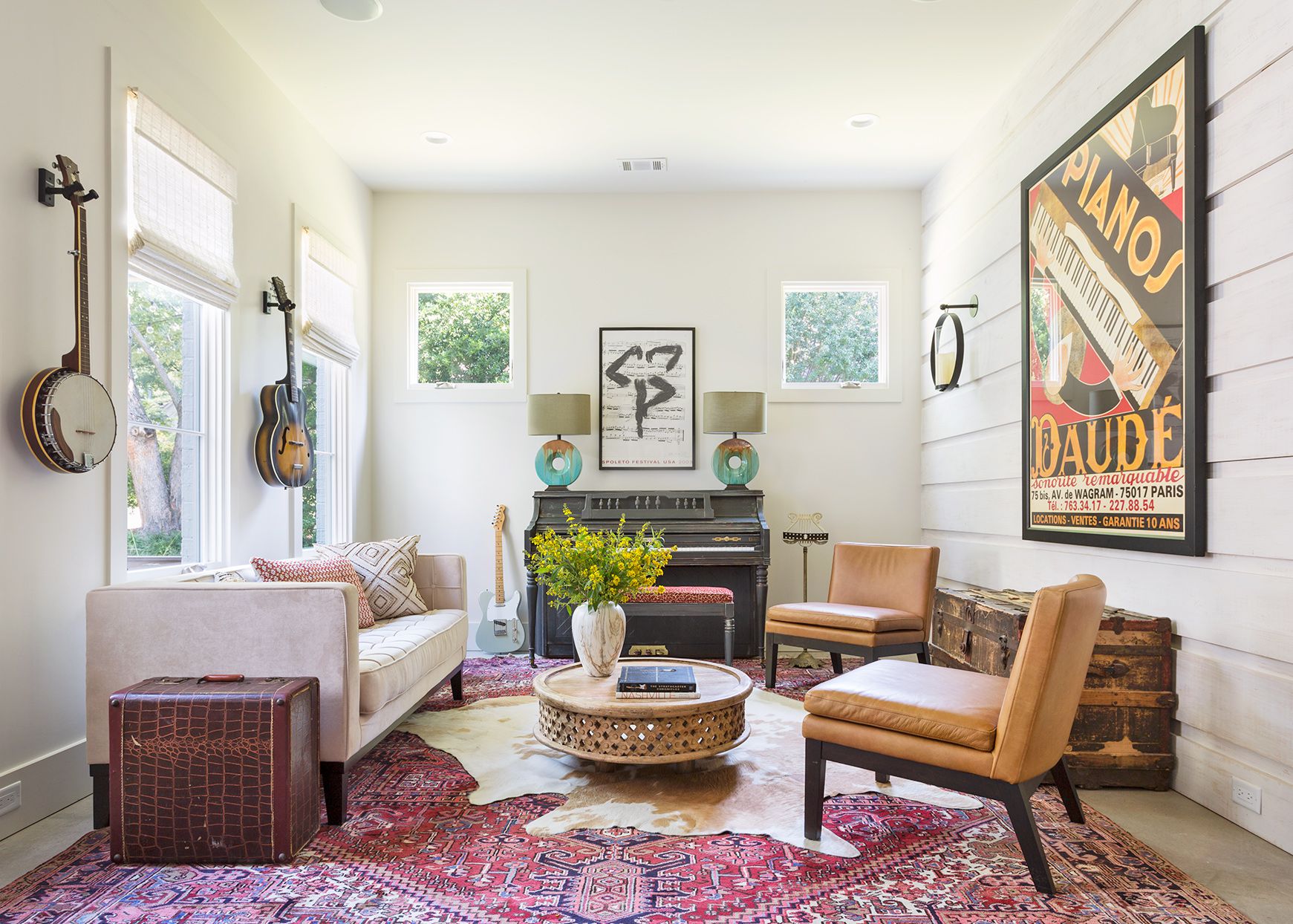
Consider the common thread as the melody of a song, seamlessly integrating with the rest of the orchestrations and instruments (your decor and furniture). It remains a constant, resonating throughout your design.
Incorporating a consistent color palette, pattern, or texture throughout your maximalist home brings a cohesive touch to your space, preventing it from feeling chaotic. This small but intentional detail helps to create a more unified and harmonious environment.
3. Prioritize Comfort
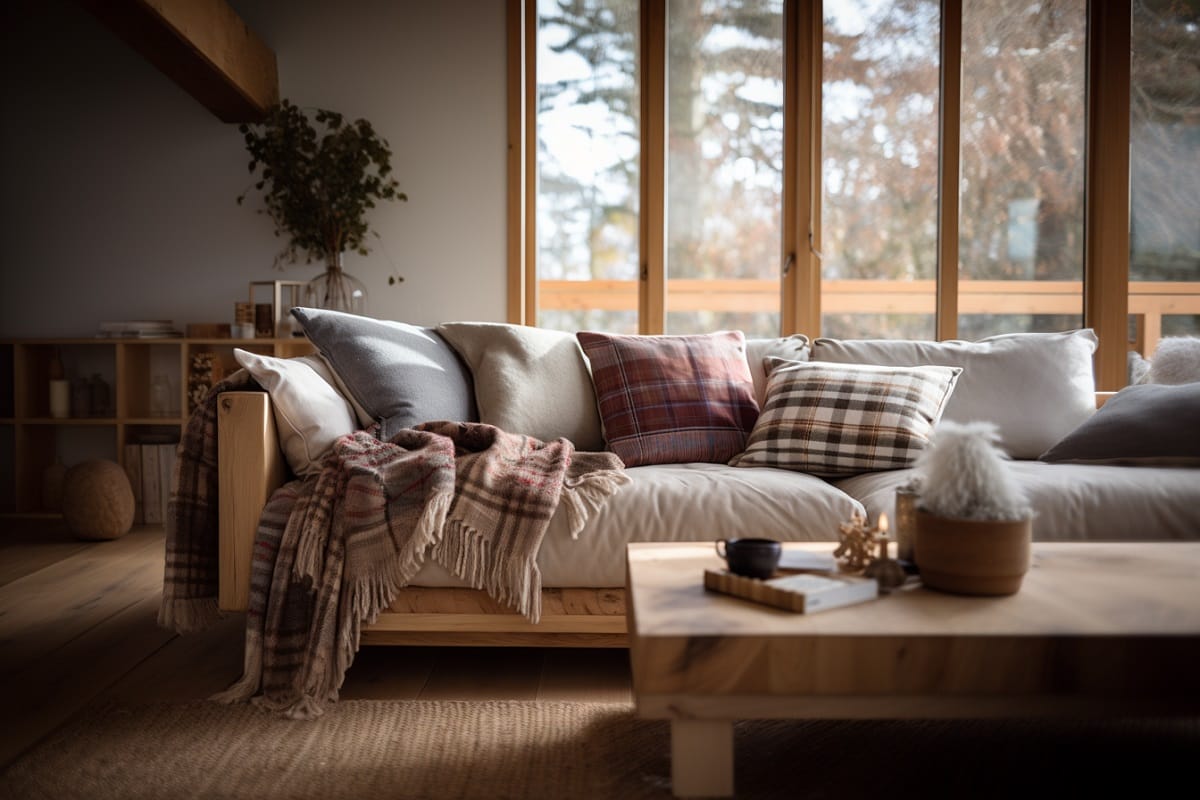
Transform your maximalist design into a cozy haven by selecting comfortable furnishings. Opt for plush sofas, a variety of patterned pillows, and soft throw blankets to create a warm atmosphere. Embrace hygge by focusing on comfort rather than just aesthetics. Choose fabrics and textures that invite relaxation and enhance the overall coziness of your space.
4. Patterned Tiles
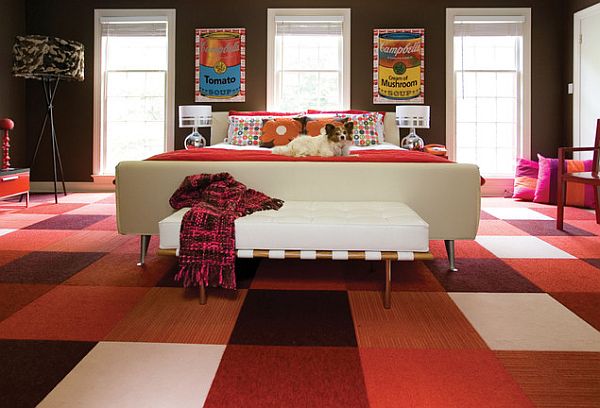
To maintain a maximalist aesthetic on the floor, consider using patterned tiles. This choice can inject color and visual interest into the space, making it especially effective in maximalist bathrooms or half-baths. Maximalist decor thrives on visual interest, meaning every corner of the room tells a story through its unique pieces.
5. Immerse Yourself in the World of Rugs
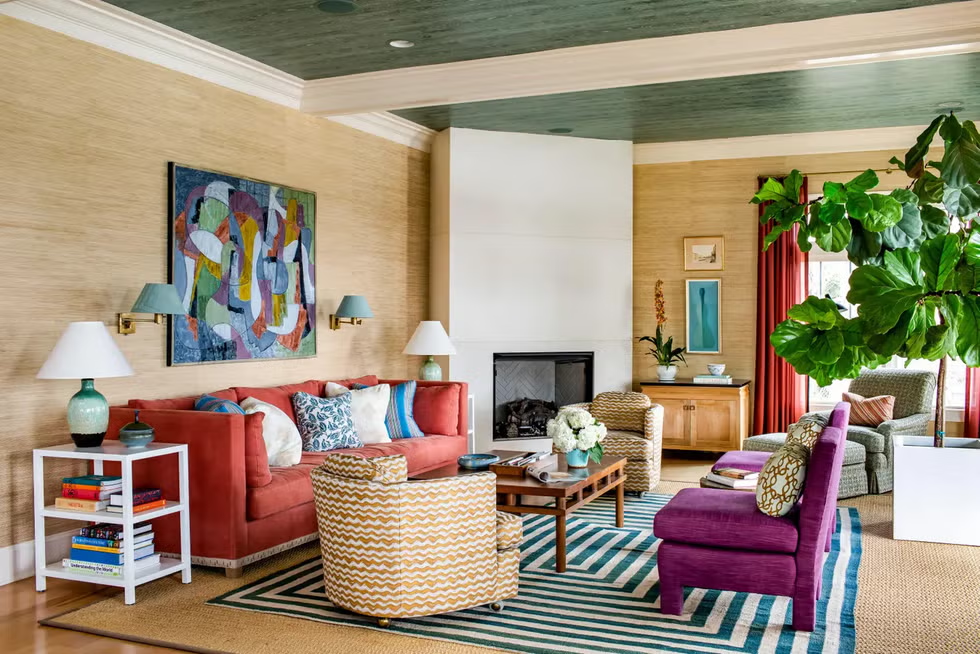
Rugs can transform a space with luxury, comfort, texture, pattern, and color. Elevate your floor with vibrant or patterned rugs that bring both coziness and style.
Rugs can serve as a bold statement piece or seamlessly integrate with the existing themes in your space through a more subtle design. They enhance your flooring by providing a soft, comfortable surface while adding visual appeal and grounding the overall look of the room.
6. No Naked Walls
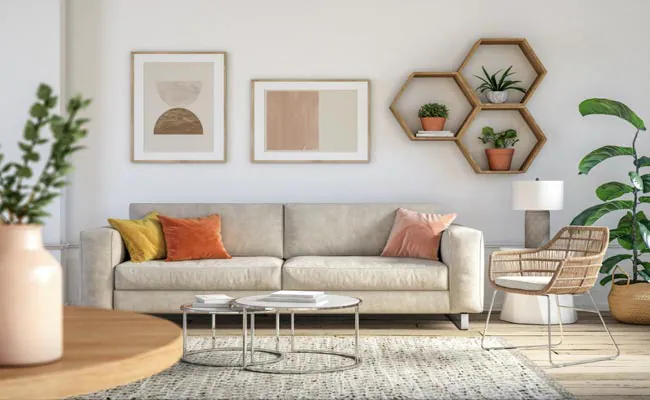
In maximalist design, empty walls are a rare sight. Whether through paint, wallpaper, or transforming walls into displays, there are countless ways to express your personality—be it as a supporting feature, a neutral backdrop, or a bold statement. Don’t hesitate to use your walls in innovative and fresh ways.
7. Wallpaper
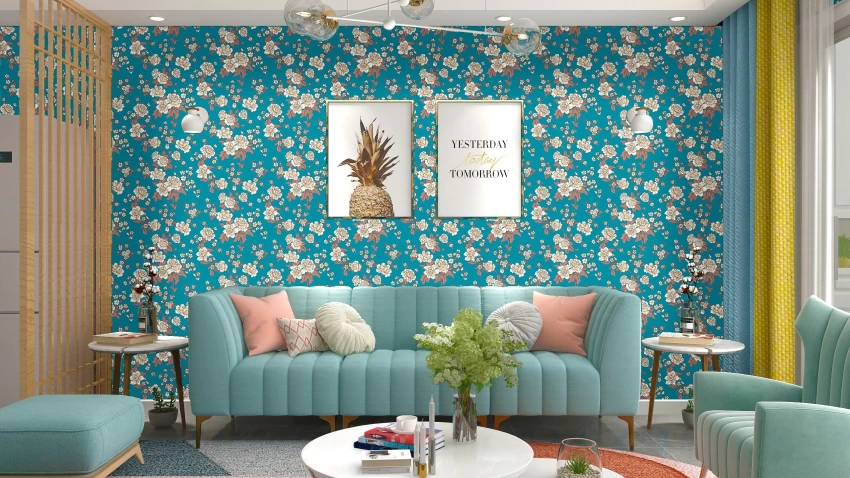
Maximalist decor allows you to layer various elements in a room, creating a dynamic and energetic atmosphere. A fantastic way to introduce bold vibrancy into maximalist interior design is by using striking wallpaper, whether floral or patterned. You can apply it to an accent wall, an entire room, or even the ceiling! Bright floral prints, in particular, are a favorite choice for maximalist spaces.
8. A Joyful Light
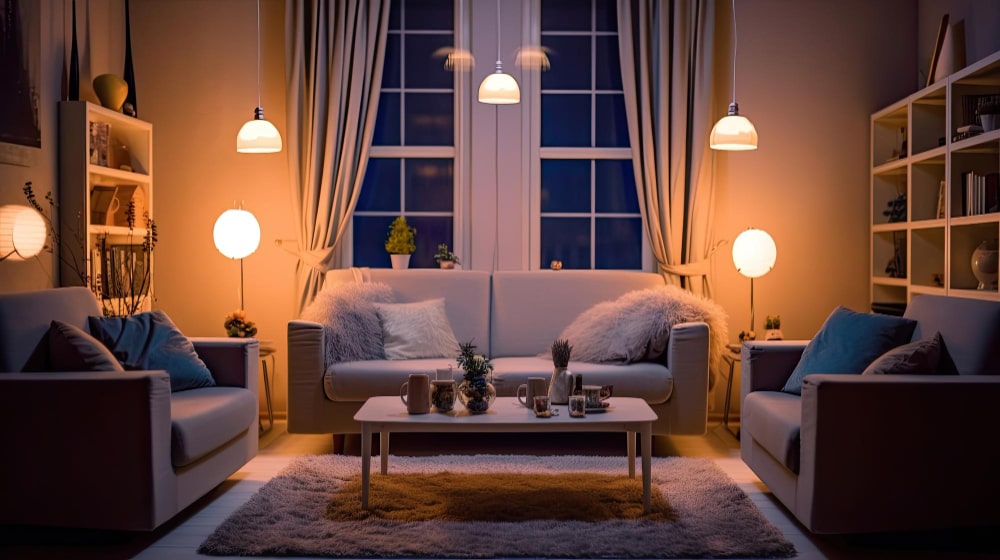
In maximalist decor, A Joyful Light refers to the intentional use of lighting to enhance the bold and eclectic atmosphere of a space. To achieve this, opt for statement lighting fixtures that double as art pieces, such as chandeliers with intricate designs, colorful pendant lights, or vintage lamps. Layering different light sources, like floor lamps, table lamps, and sconces, adds dimension and creates a warm, inviting glow. Embrace vibrant lampshades or fixtures with unique shapes to reflect the playful energy of maximalist design, turning your lighting into a joyful focal point that complements the room’s bold colors and textures.
9. Booked Bookcases
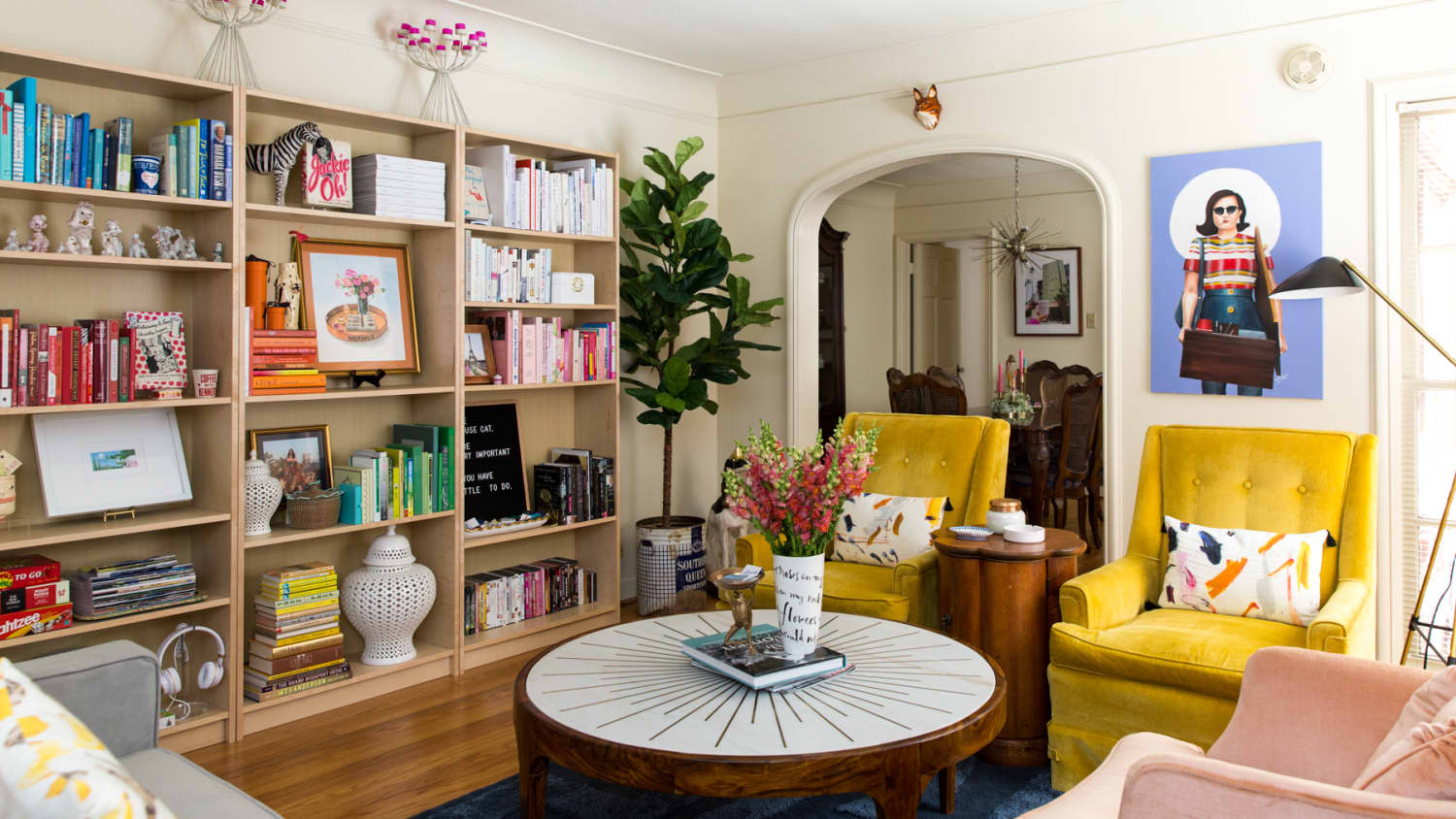
Bookcases are a great way to enhance maximalist designs. Fill them with books and stack various items to create a dynamic, eclectic look. You can also layer the shelves with personal treasures or mementos that showcase your personality and adventures.
10. Gallery Wall
Decorate an entire wall with art, paintings, or even distinctive frames. Using various sizes can create a playful, eclectic vibe, or for a more polished look, opt for artwork and frames that are uniform in size.
Ensure consistent spacing between each frame to create a balanced visual display of various artworks. Consider placing an art wall above a couch or other focal point, or create a gallery effect along stairwell walls.
11. Plants
Bring life and vibrancy to your space by incorporating plants. If you’re drawn to the color green or have embraced your role as a plant parent, let your green thumb flourish!
Paint the pots or display them on the wall to enhance the depth and complement your chosen color palette. In maximalist designs, the more plants, the better!
12. Accessories: Personalize Your Look
Maximalist designs often showcase items like vinyl records, unique glass bottles, license plates, figurines or plush toys, sculptures, souvenirs, and other collectibles. Get creative and have fun displaying your collection!
Opposing Aesthetics: Maximalism vs. Minimalism
In contrast to the “less is more” philosophy of minimalist design, which prioritizes form over function, maximalist design takes the opposite approach, embracing the idea that “more is more.” If minimalism isn’t your style, maximalist decor offers a vibrant alternative full of character and life.
Maximalism focuses on creating a vibrant home that reflects your personality and interests through an abundance of accessories and eclectic elements. In contrast, minimalism aims to achieve a serene, uncluttered environment characterized by bright, clean spaces and functional design. With an emphasis on clean lines and a neutral color palette of whites, grays, and blacks, minimalist design utilizes negative space to highlight sparse yet purposeful furniture, making these pieces the central elements of the design.
Maximalism contrasts sharply with minimalism, often leaving little to no negative space. Instead, it embraces bold, vivid colors, a rich array of shapes and patterns, and a space filled with elaborate decor.
In maximalist designs, you’ll often find spaces brimming with cherished artwork, collections, trinkets, and accessories. Even if not every item serves a practical purpose, they all work together to create a warm and inviting atmosphere.
Maximalist, Bohemian, and Eclectic Styles: A Comparison
Maximalist design shares several similarities with both bohemian and eclectic interior styles, especially in their emphasis on personalization.
Bohemian and maximalist designs both defy traditional style rules, prioritizing personal expression over conformity. However, maximalism takes this to a more dramatic level. While bohemian style embraces a relaxed, artistic vibe, emphasizing creativity over material wealth, maximalism is bolder, more extravagant, and focused on making a striking, attention-grabbing statement.
Eclectic interior design often merges contrasting styles, such as combining the old with the new, to create a unique and distinct look. Unlike bohemian or maximalist designs, which aim to break conventional design rules, eclectic style seeks to bend and blend these rules, integrating elements from various styles while maintaining balance and harmony.


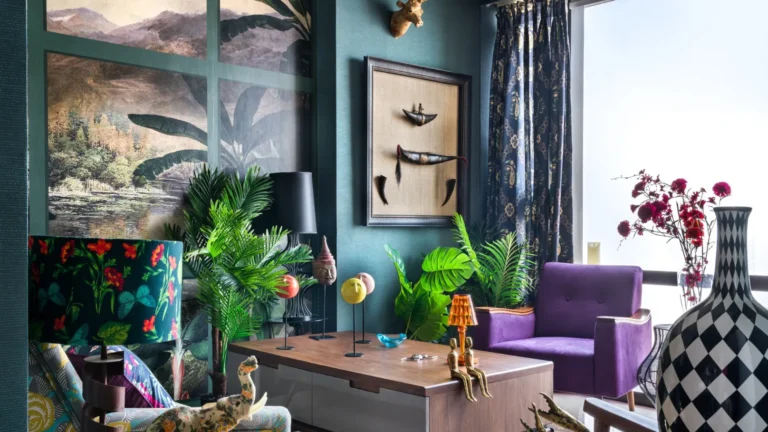



 Before we delve into the many benefits of face serums, it’s essential to understand the basics: what exactly is a face serum? A face serum is a lightweight, topical skincare product formulated with a higher concentration of active ingredients, such as hyaluronic acid, glycolic acid, and vitamin C. These potent ingredients are what set serums apart, making them highly effective in addressing specific skincare concerns like wrinkles, dark spots, and uneven skin tone. Unlike other skincare products, serums are designed to deliver these active ingredients deep into the skin, allowing for more targeted and impactful results.
Before we delve into the many benefits of face serums, it’s essential to understand the basics: what exactly is a face serum? A face serum is a lightweight, topical skincare product formulated with a higher concentration of active ingredients, such as hyaluronic acid, glycolic acid, and vitamin C. These potent ingredients are what set serums apart, making them highly effective in addressing specific skincare concerns like wrinkles, dark spots, and uneven skin tone. Unlike other skincare products, serums are designed to deliver these active ingredients deep into the skin, allowing for more targeted and impactful results.
